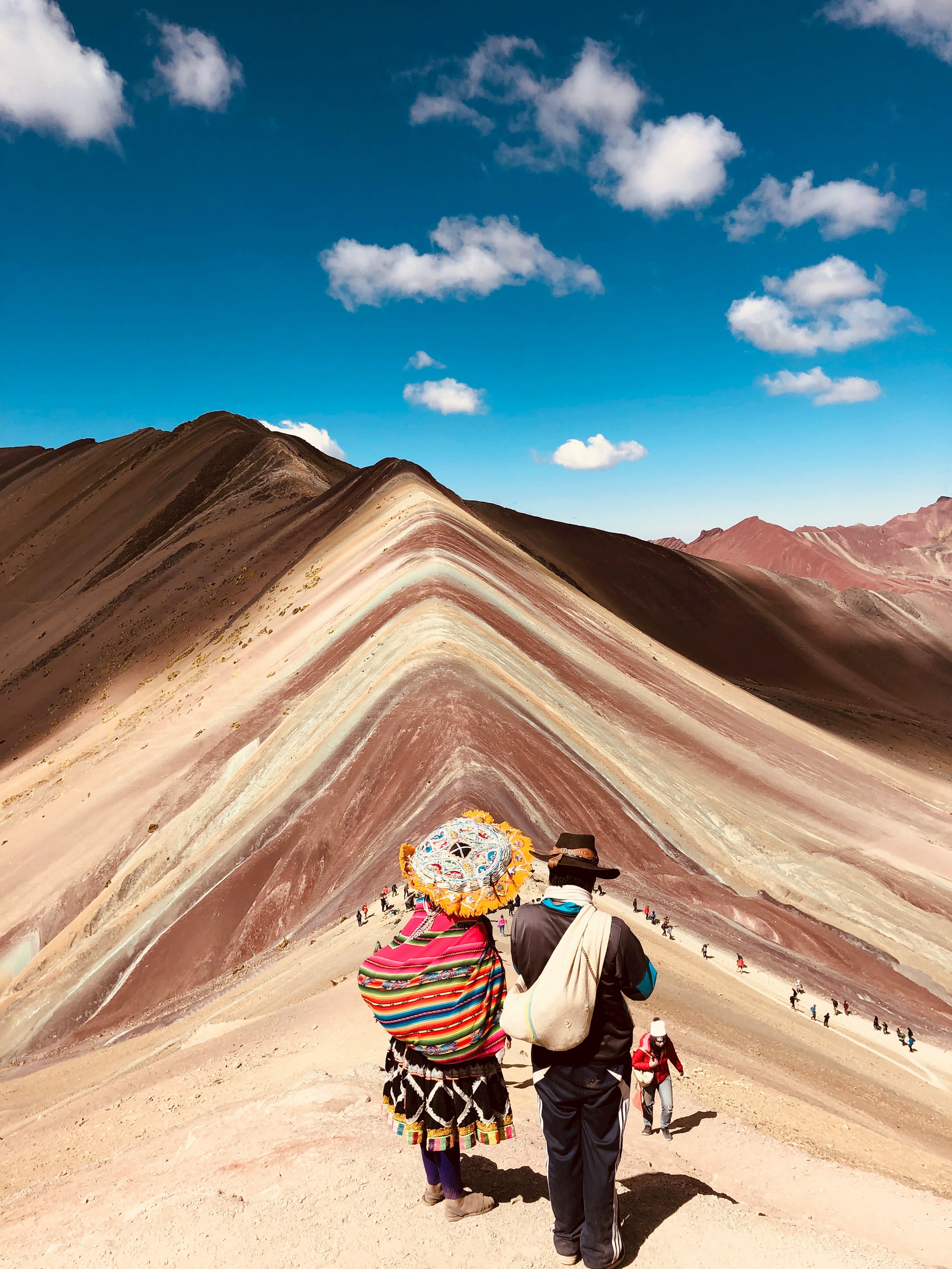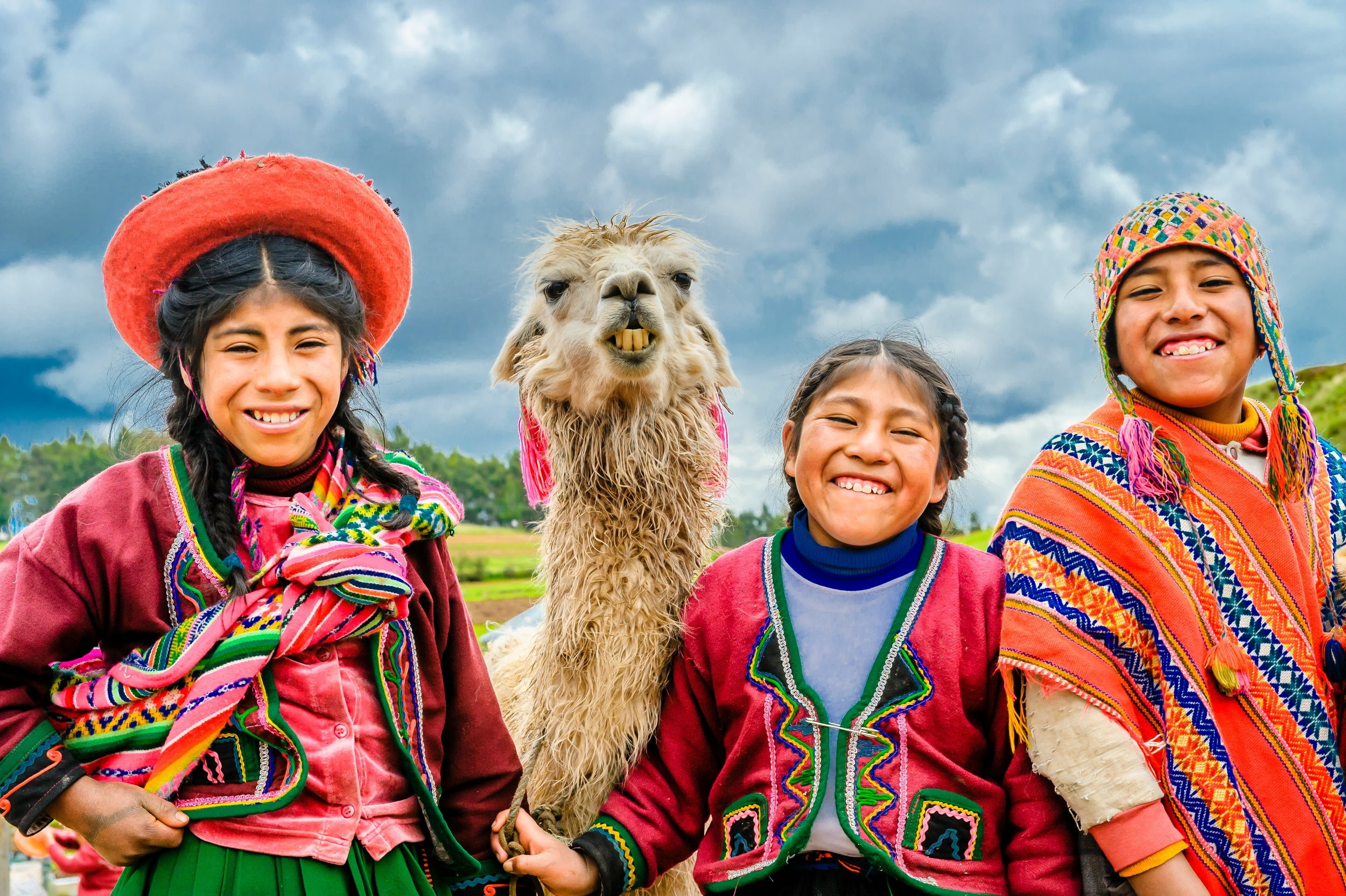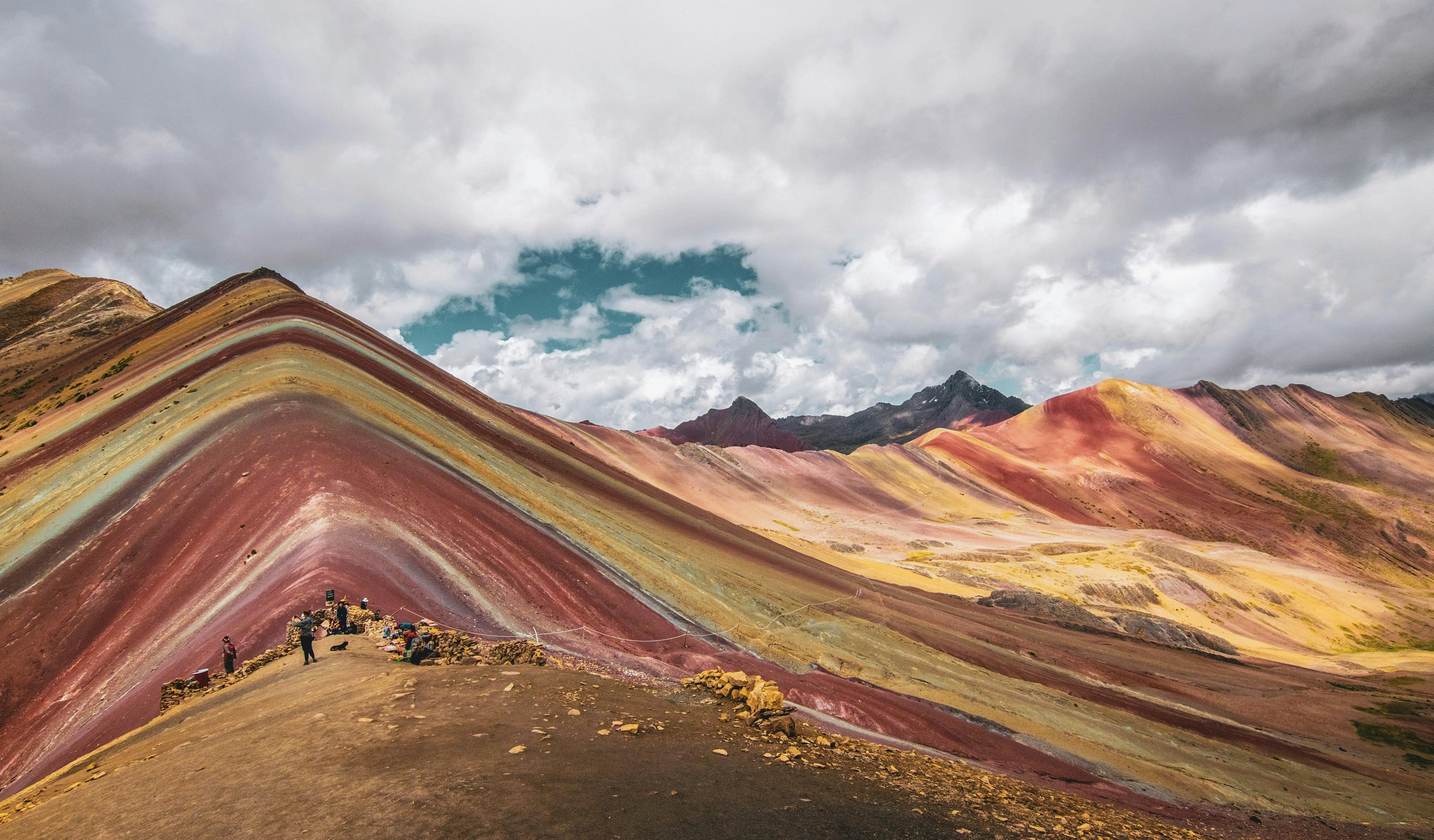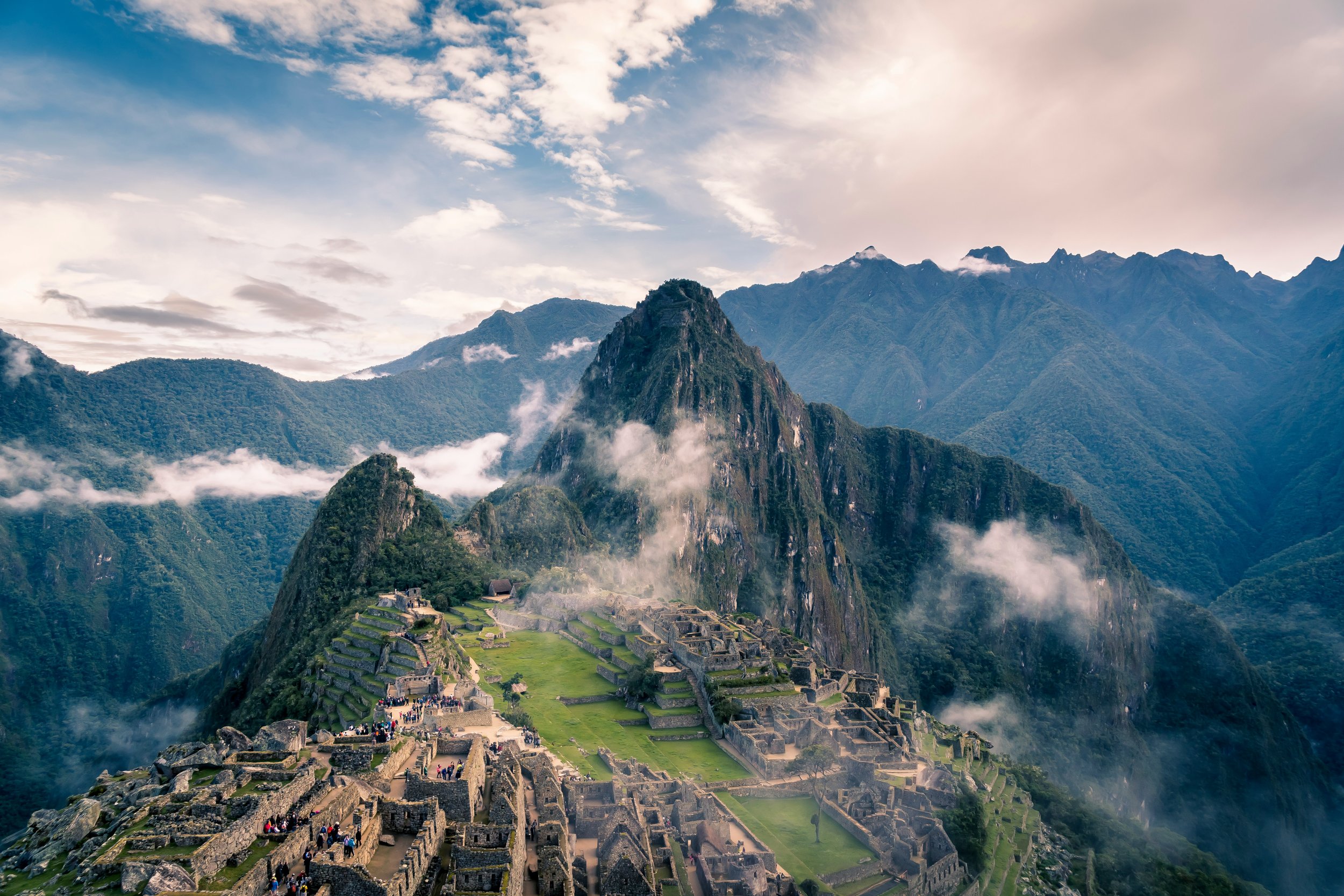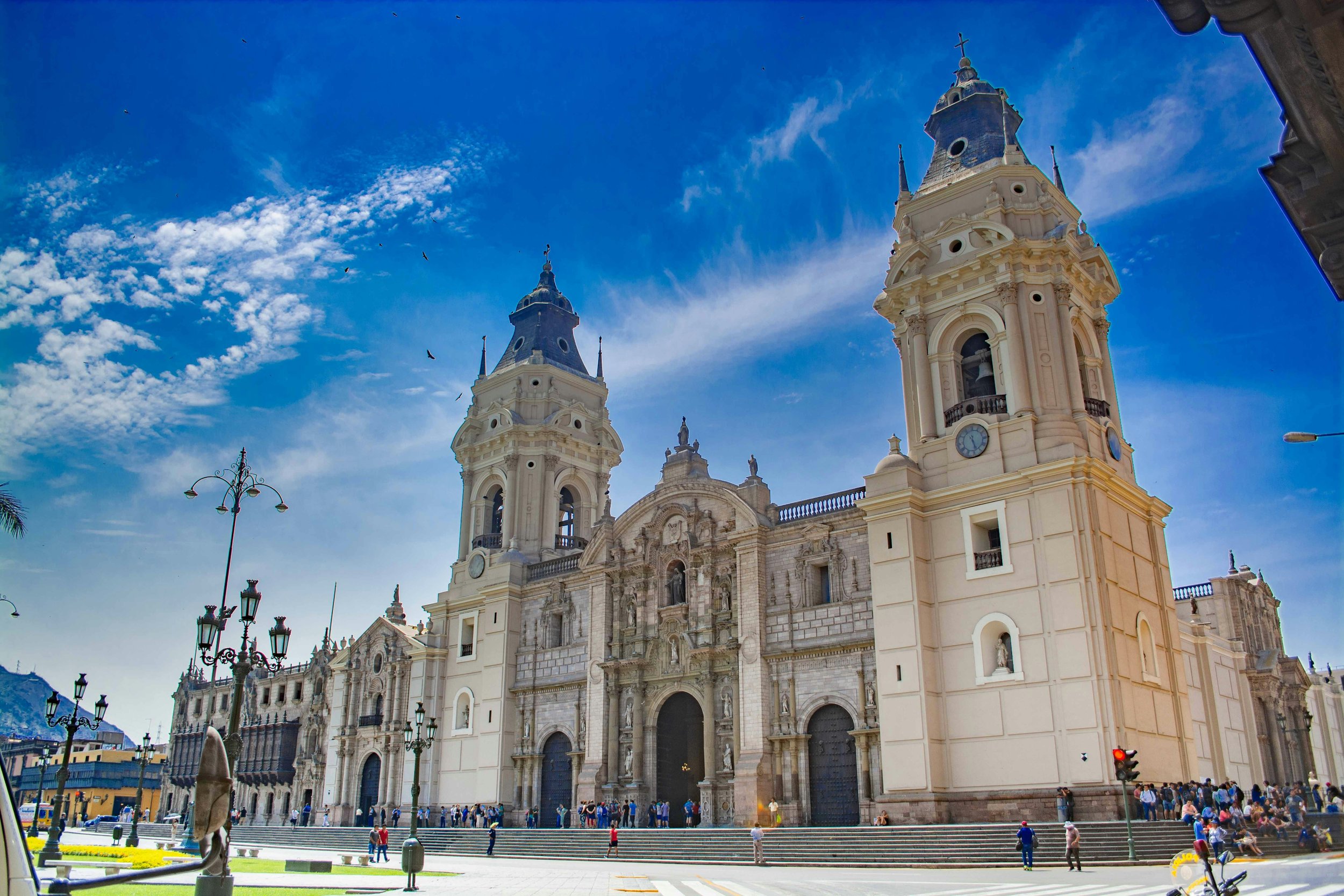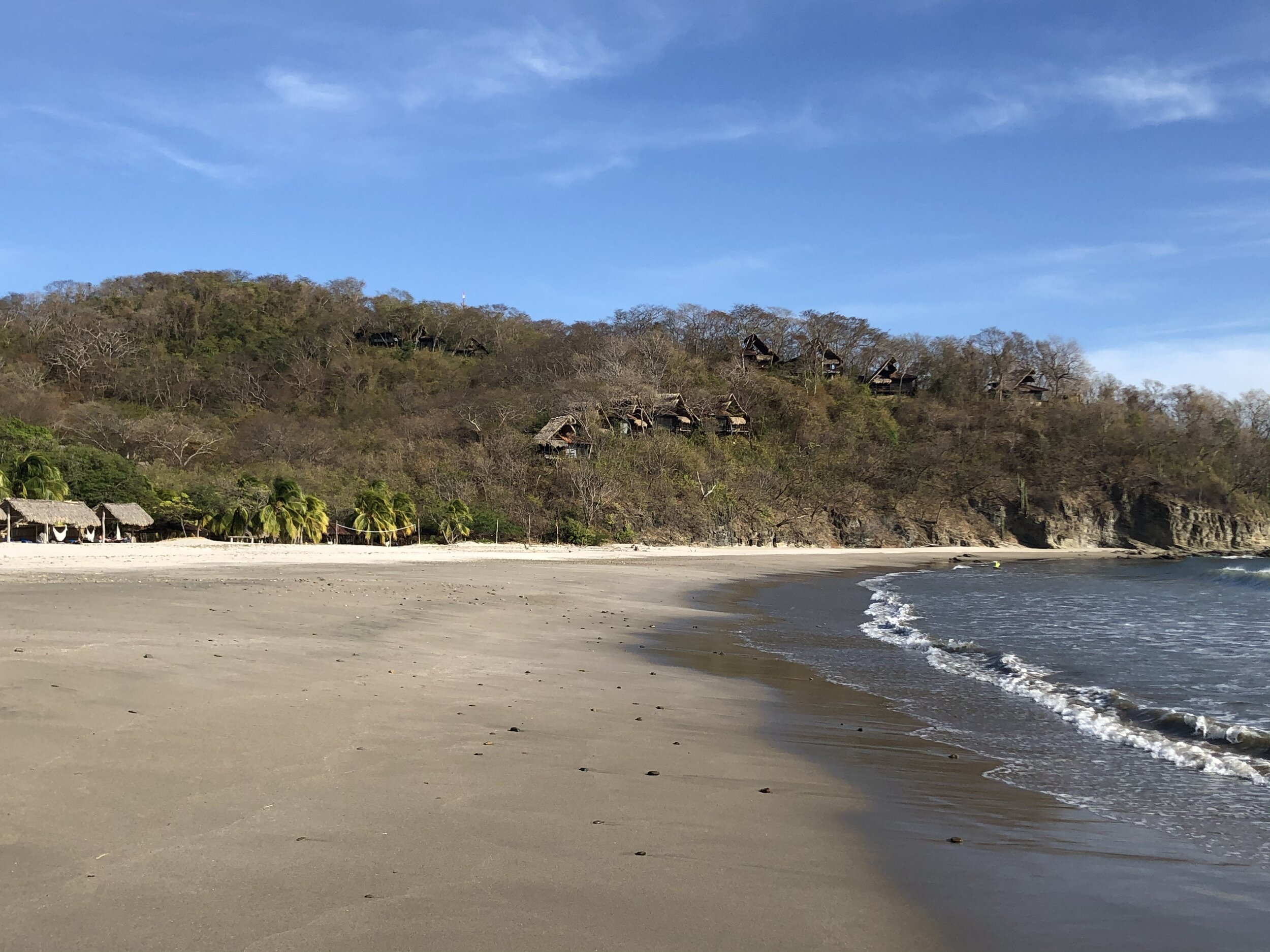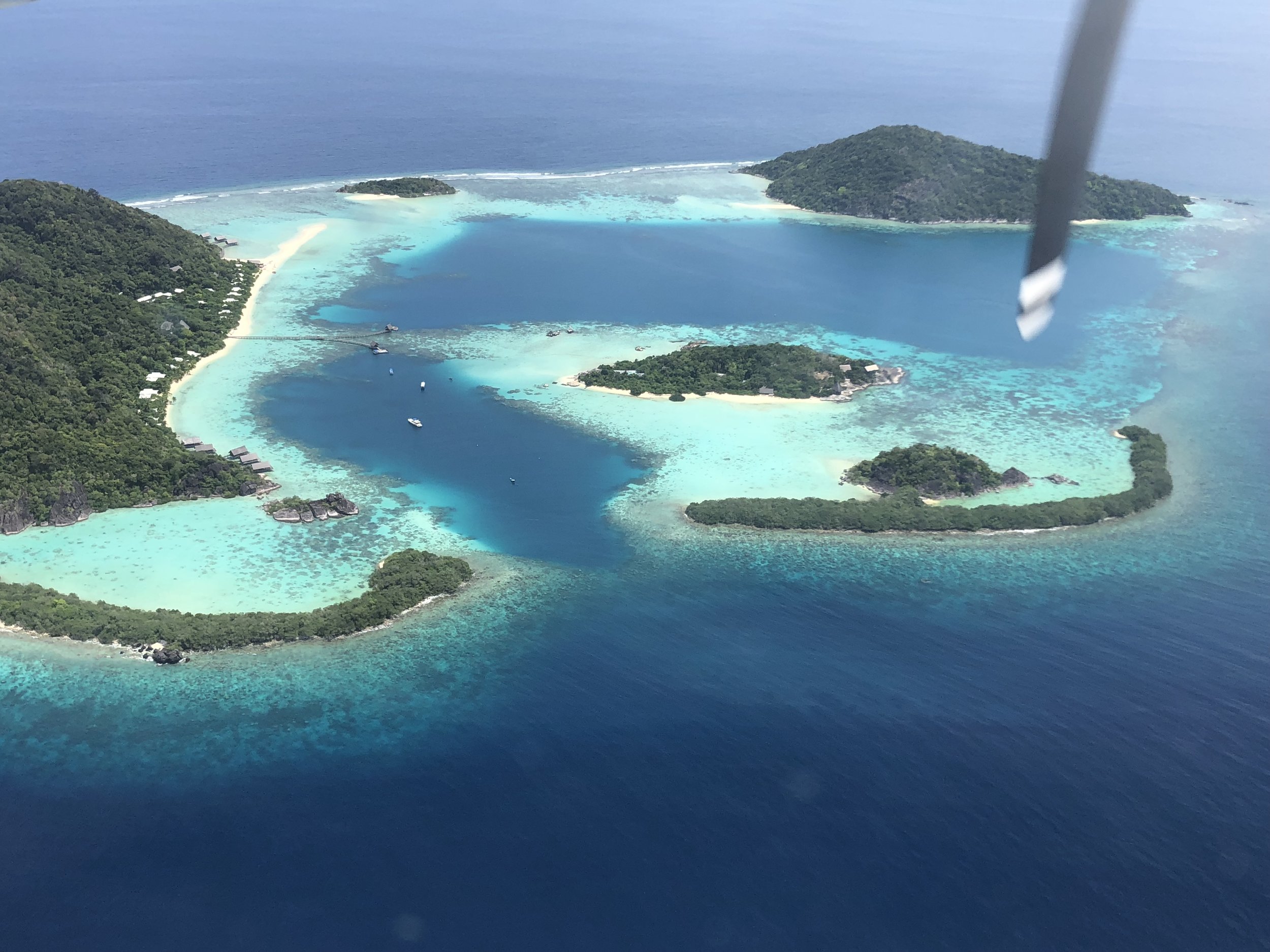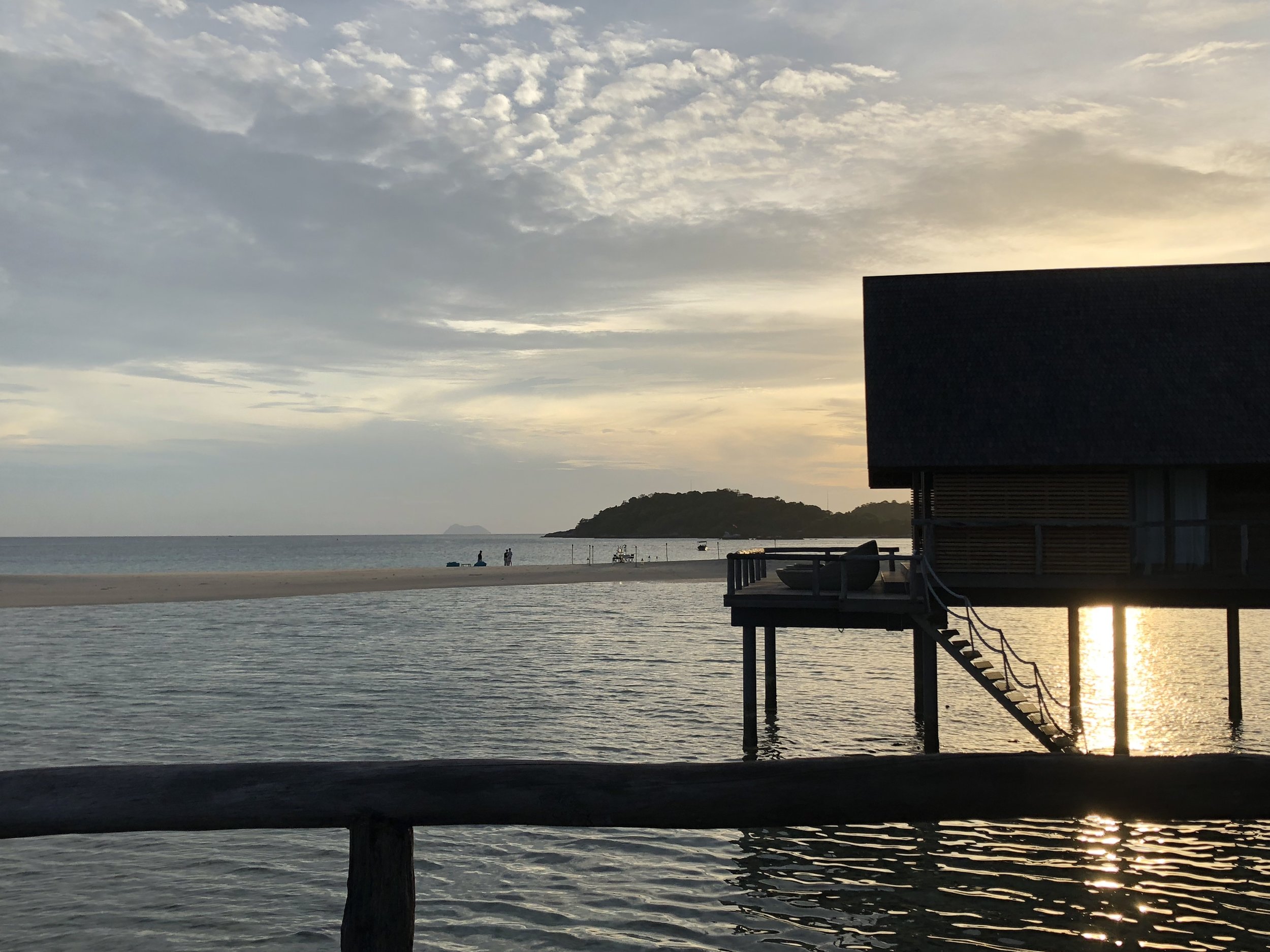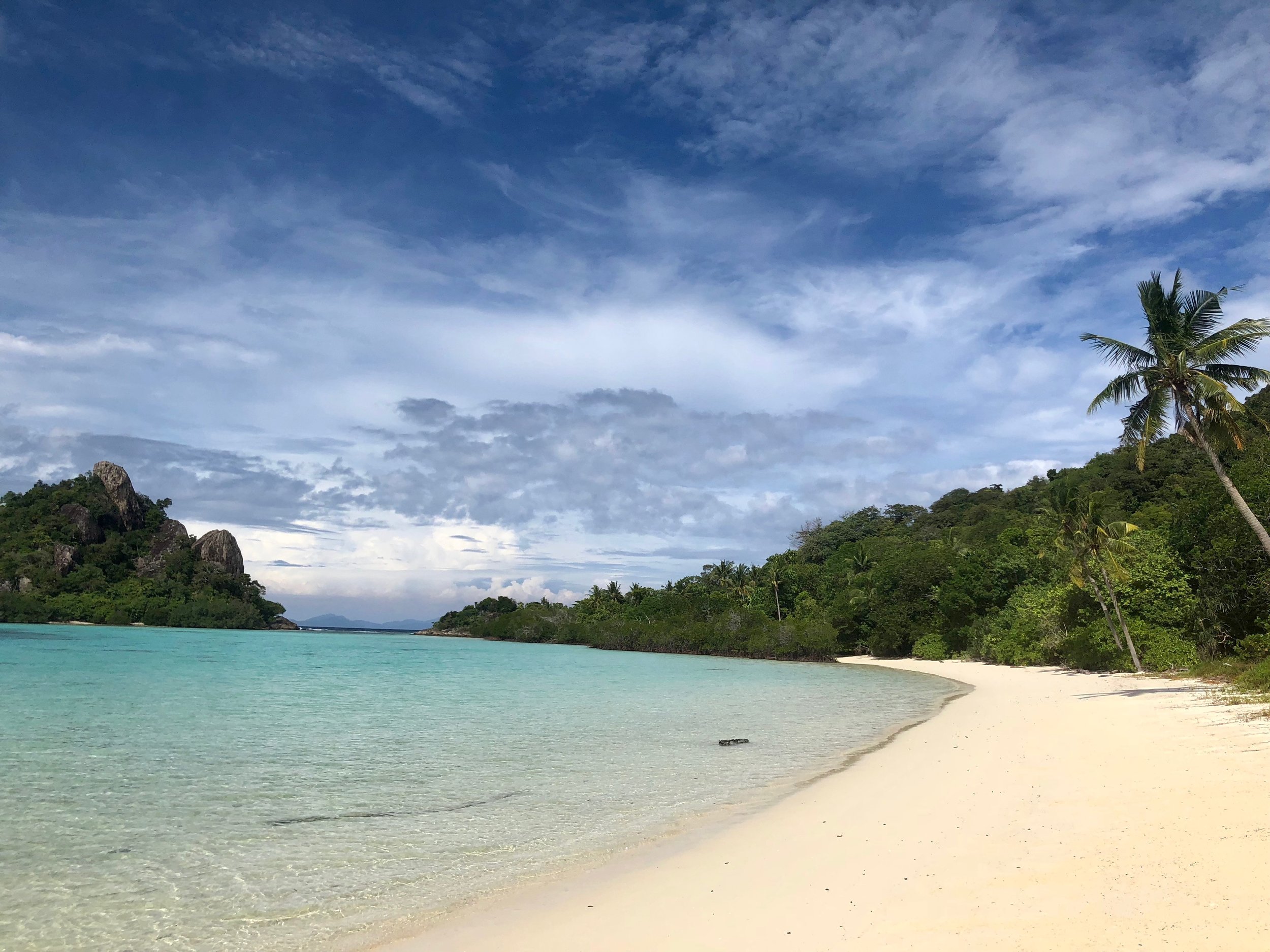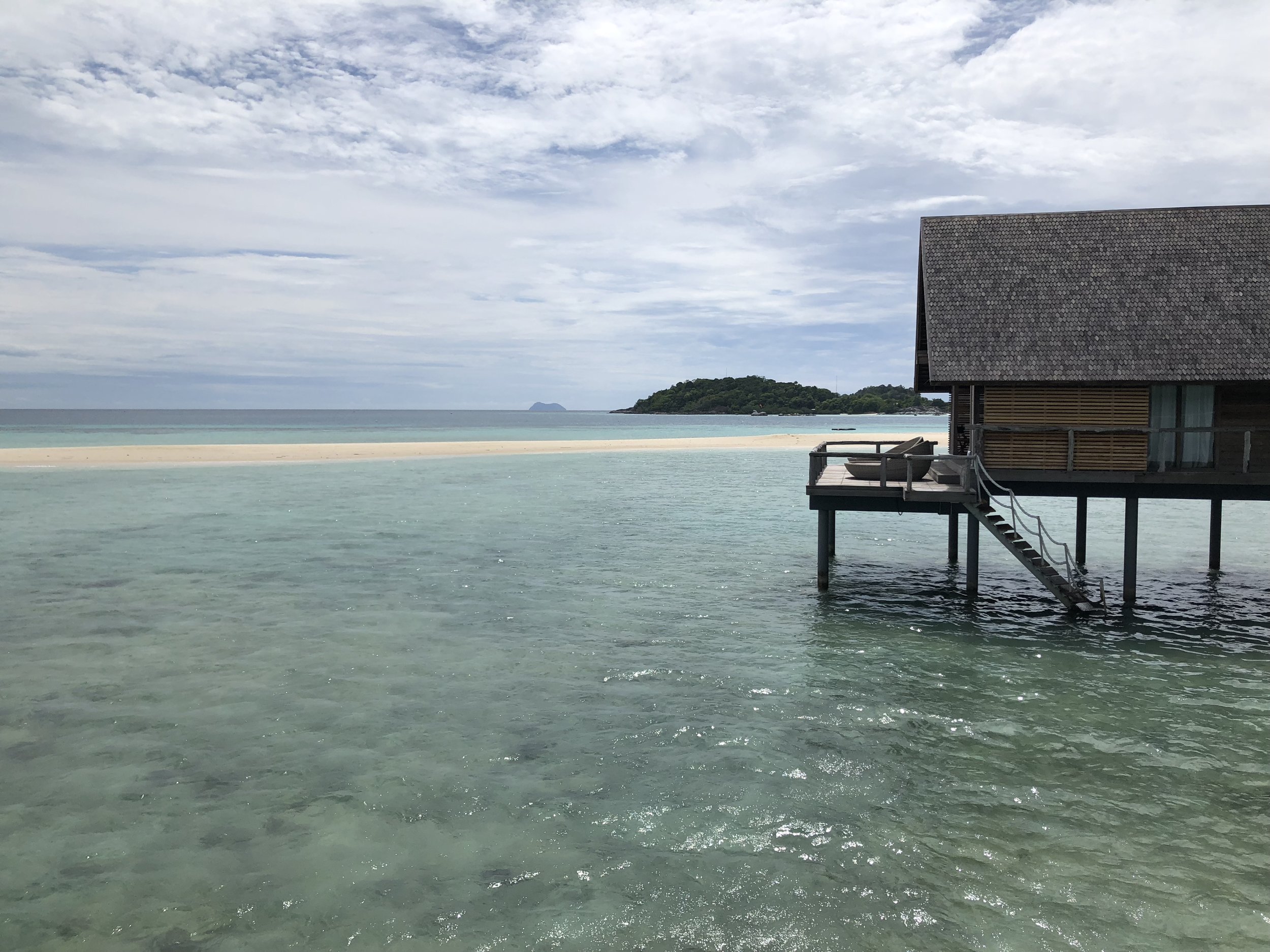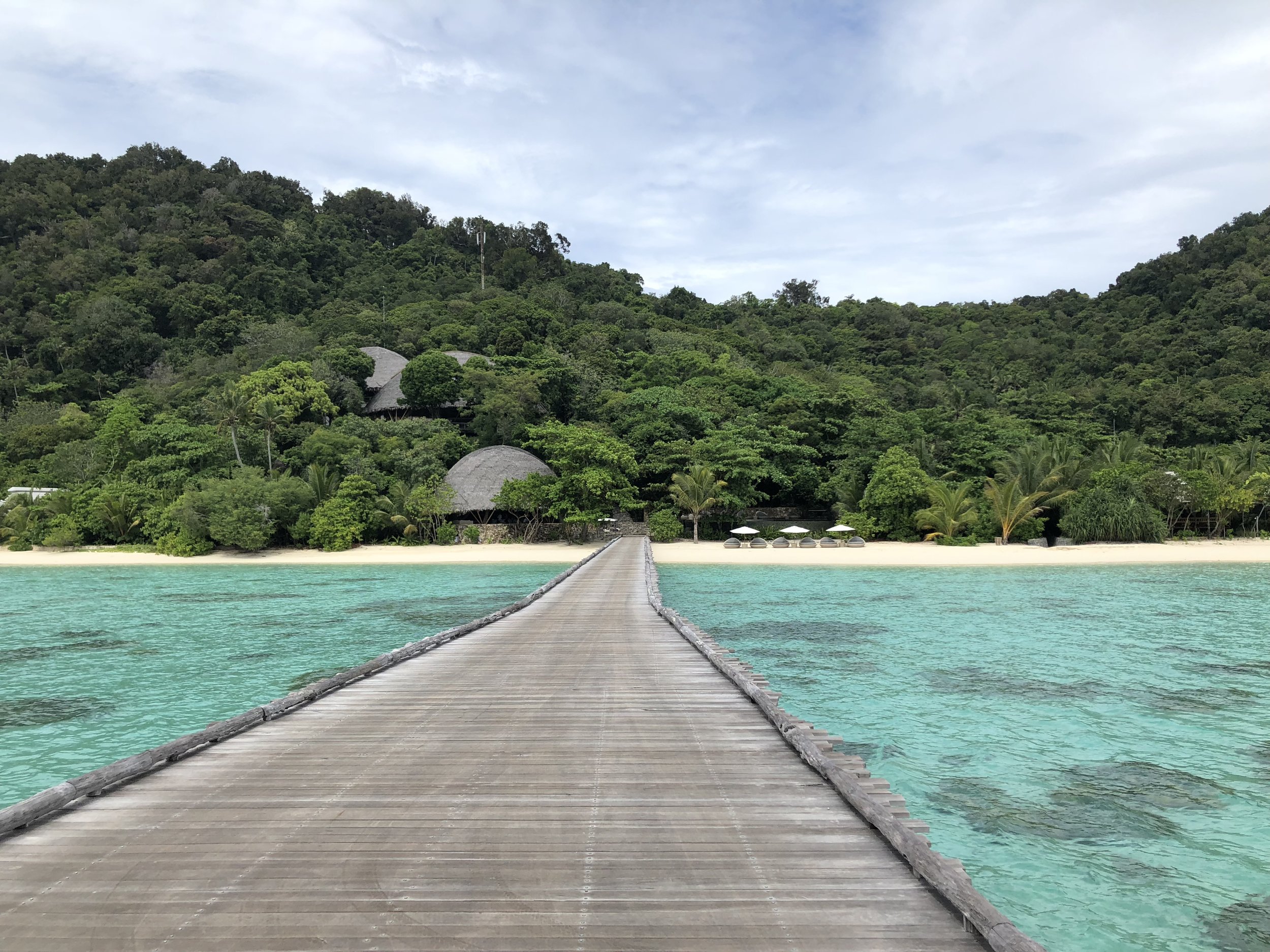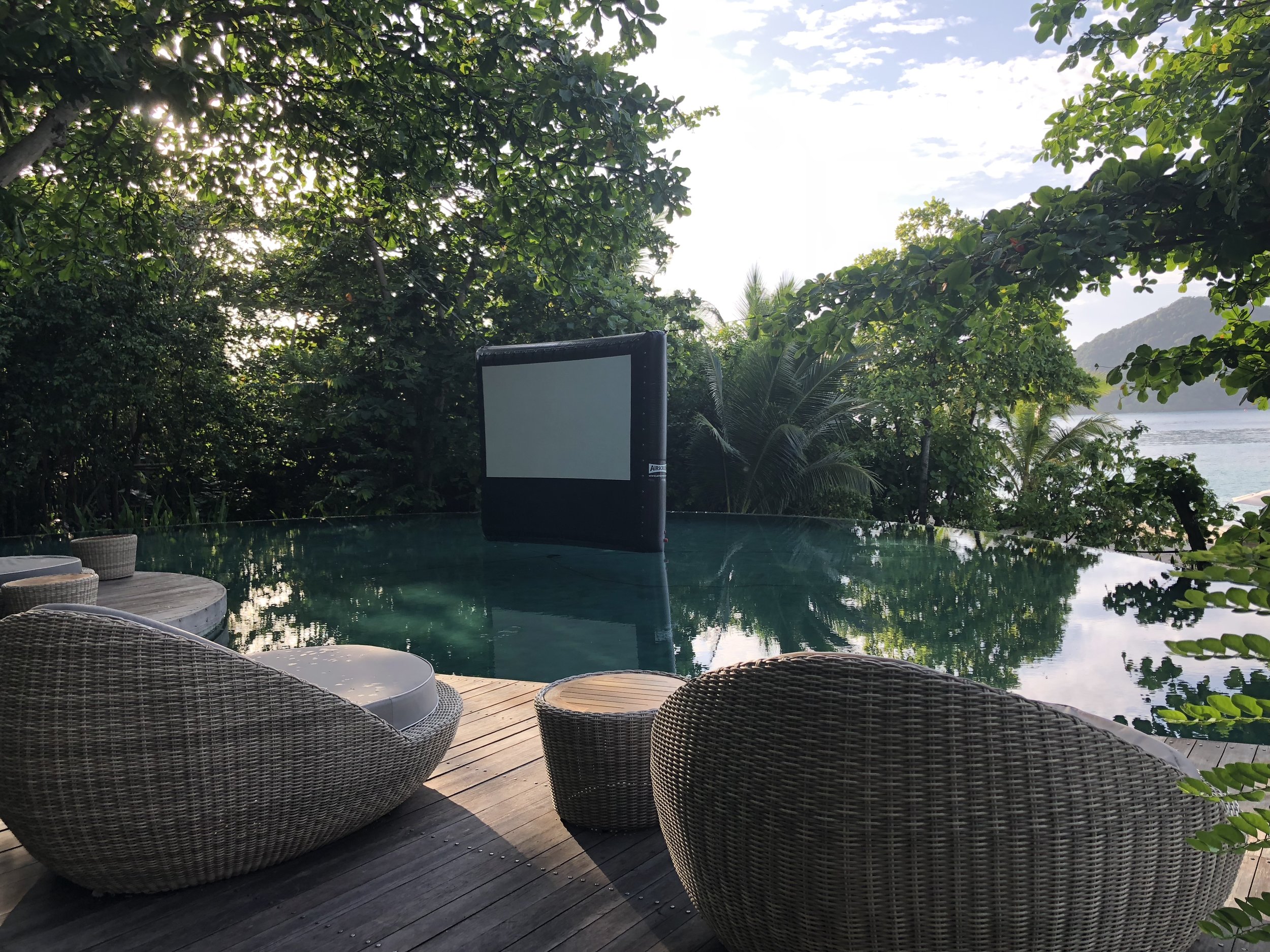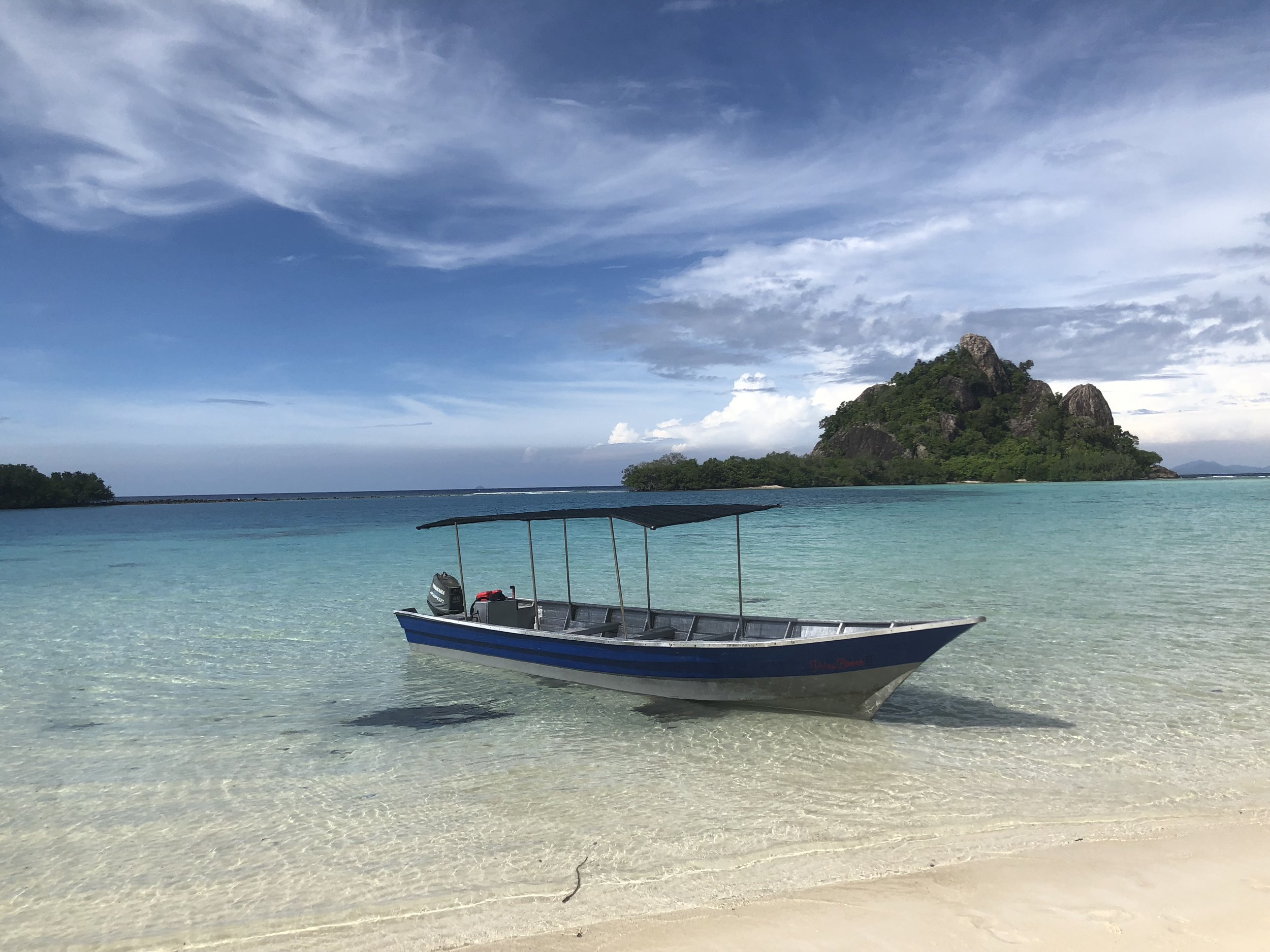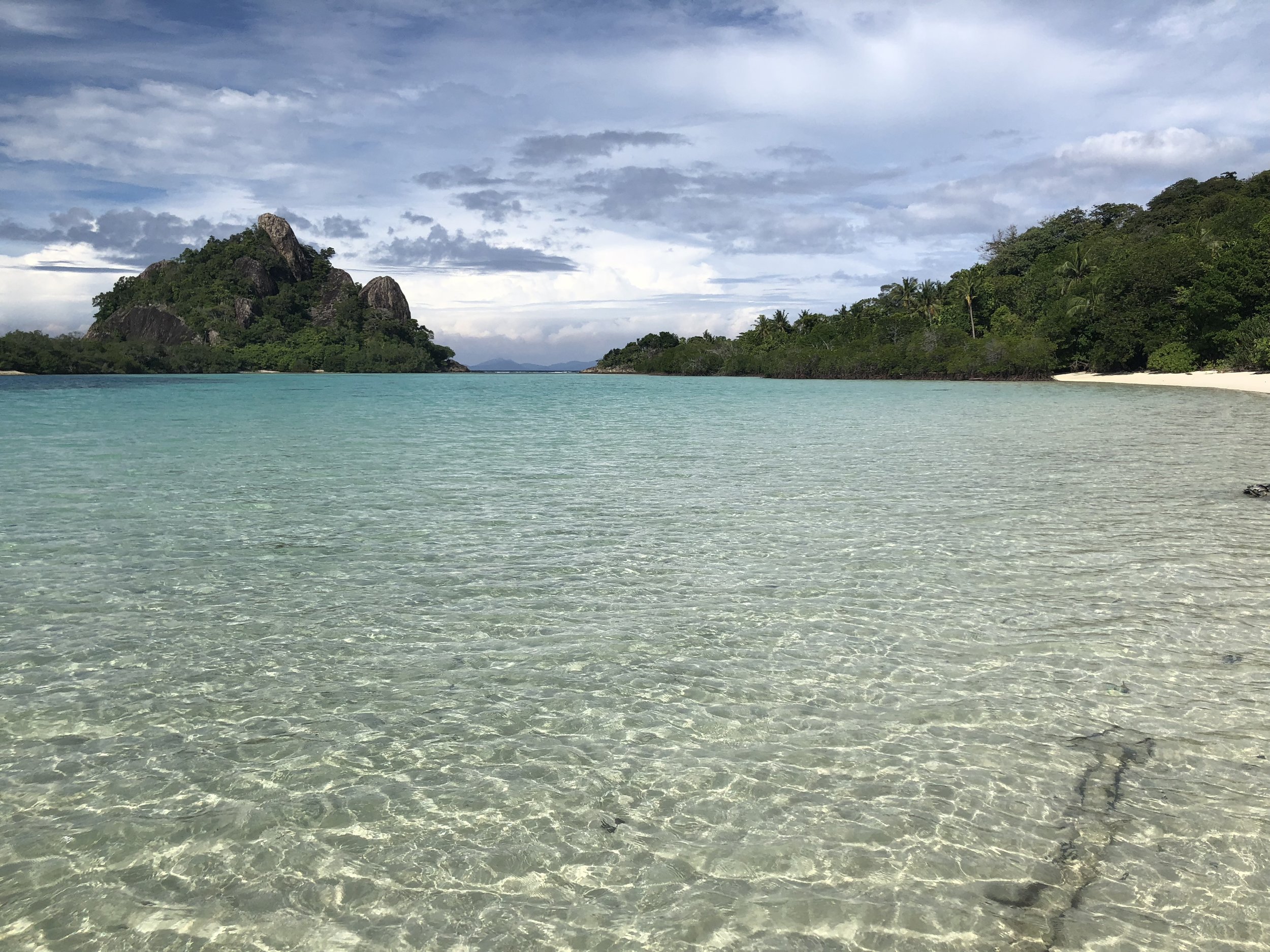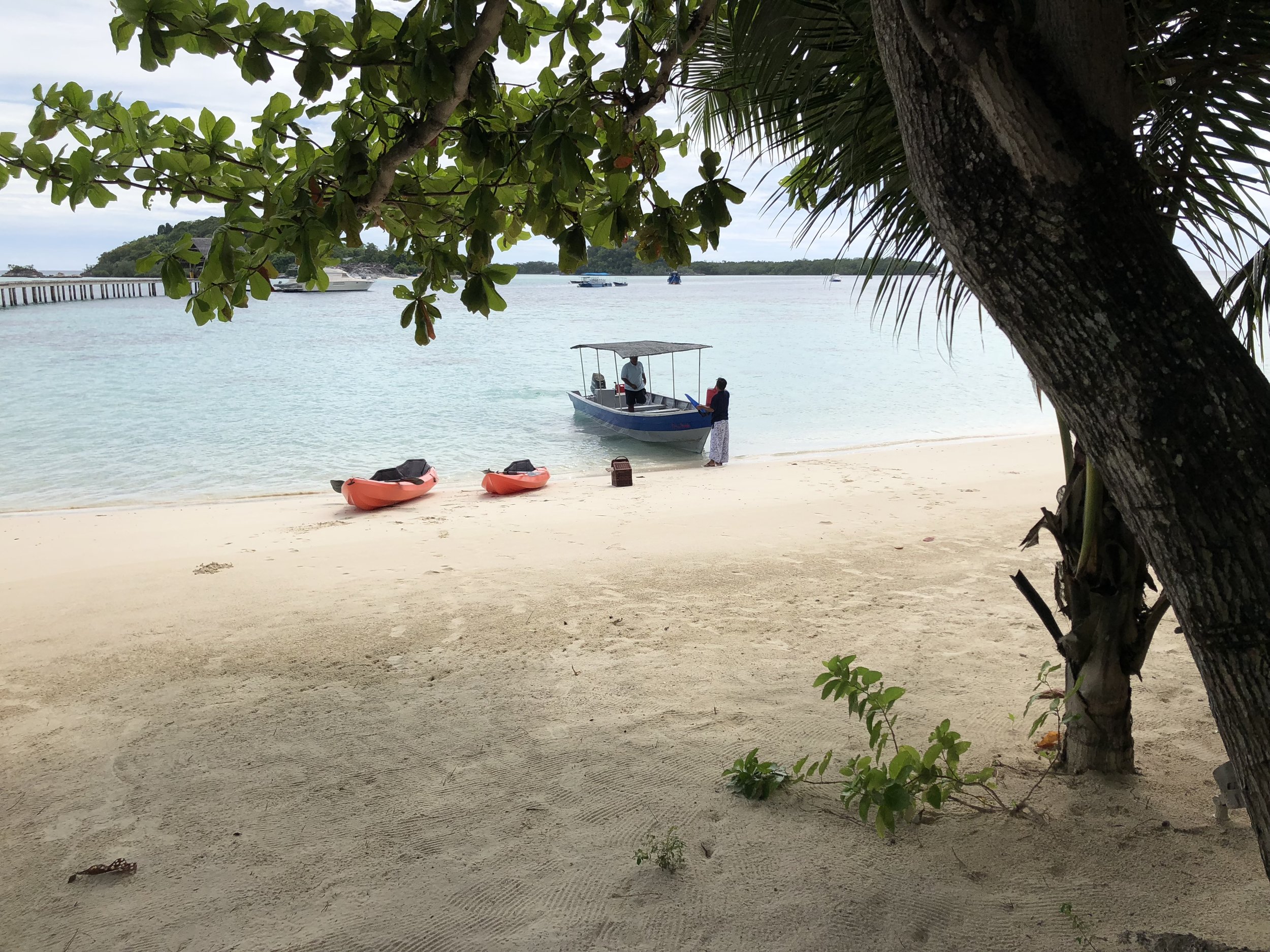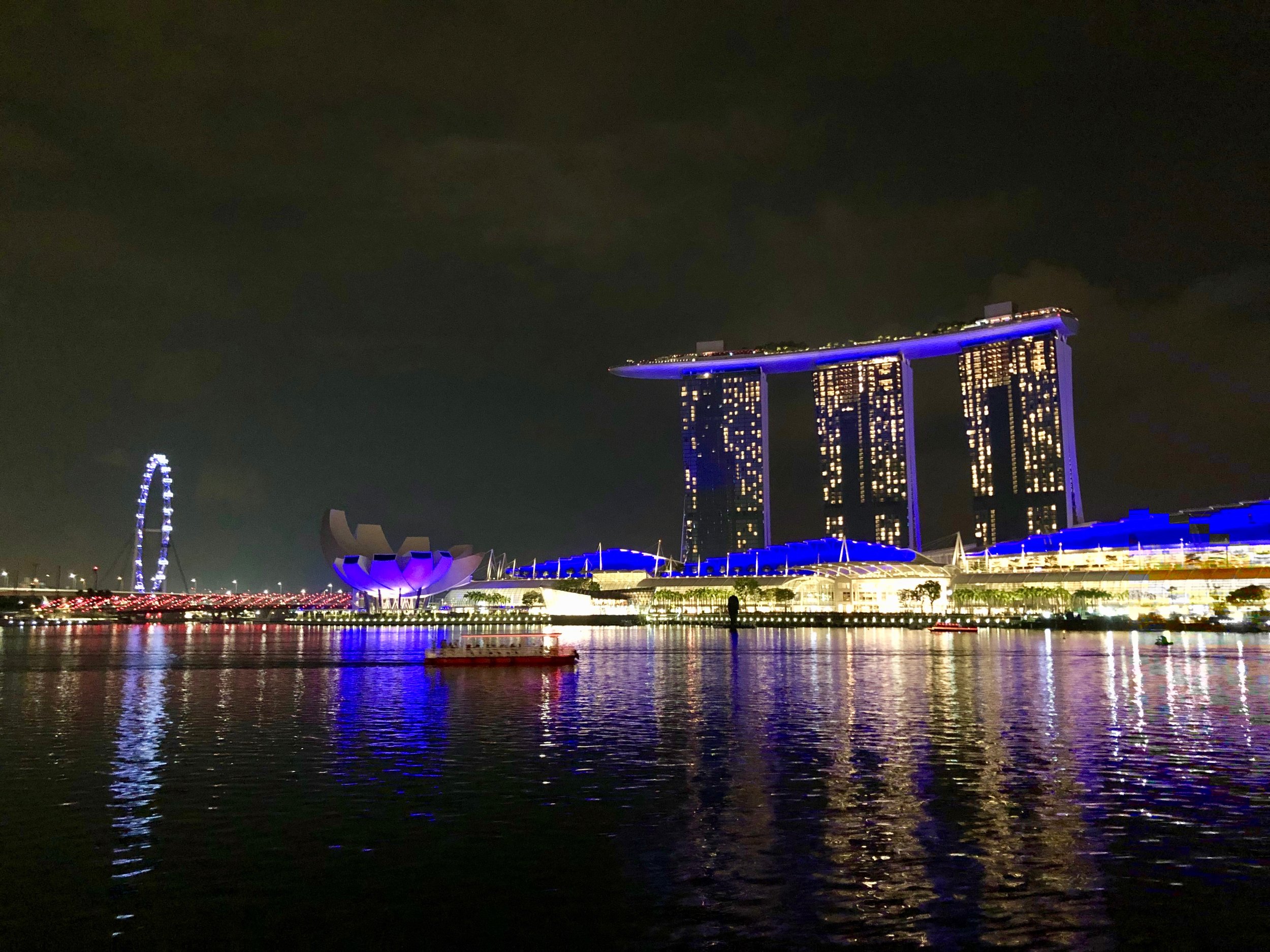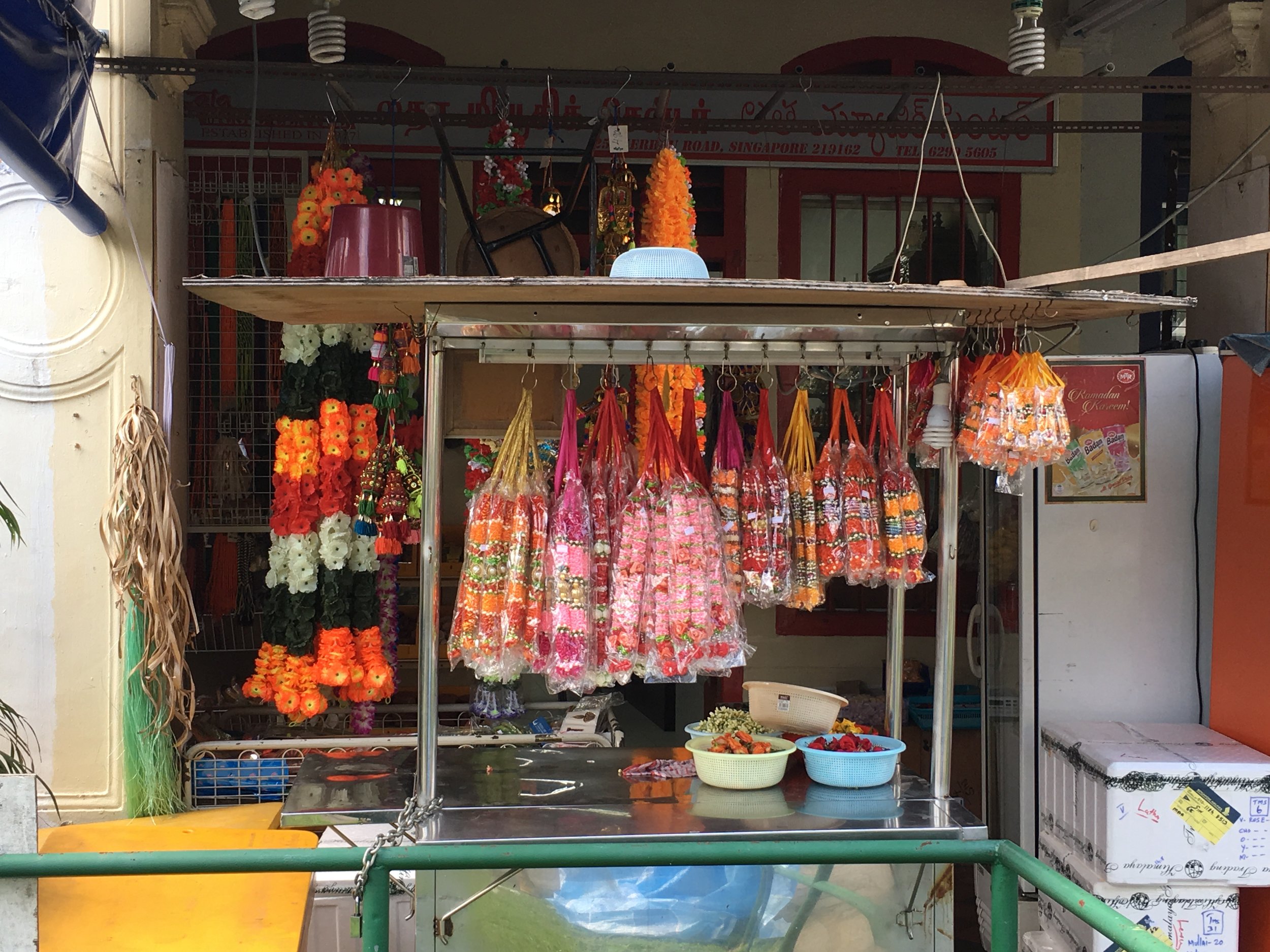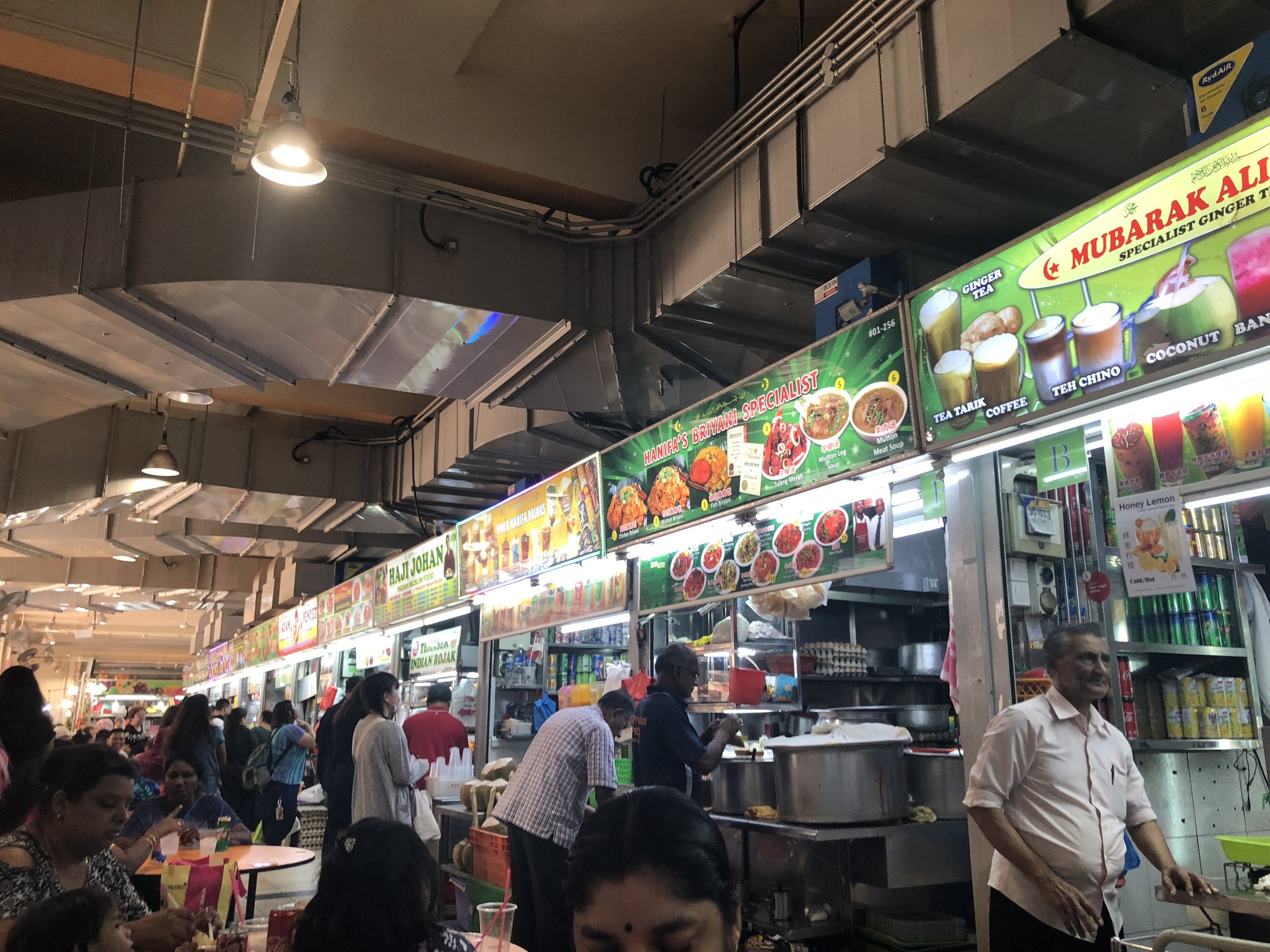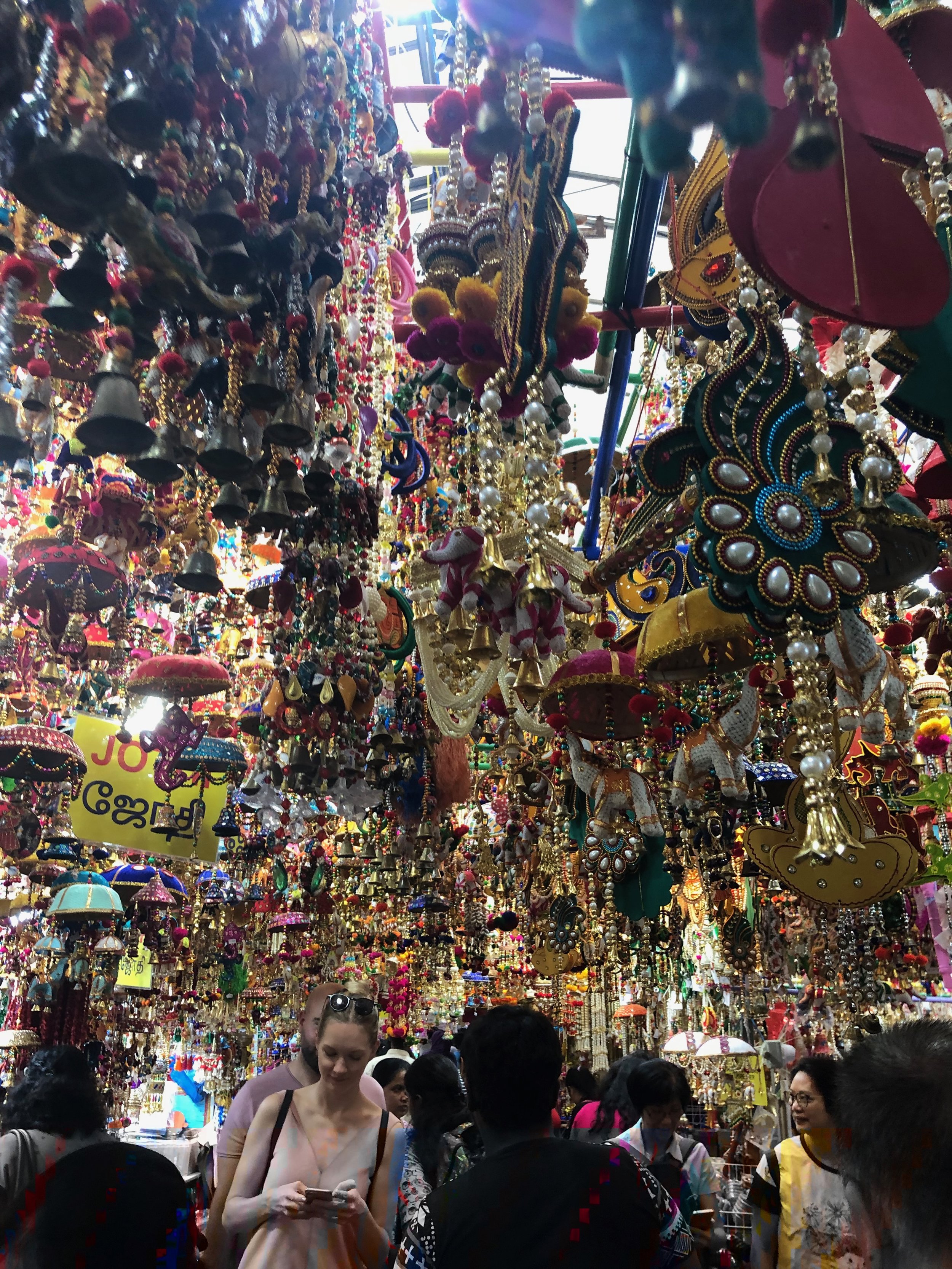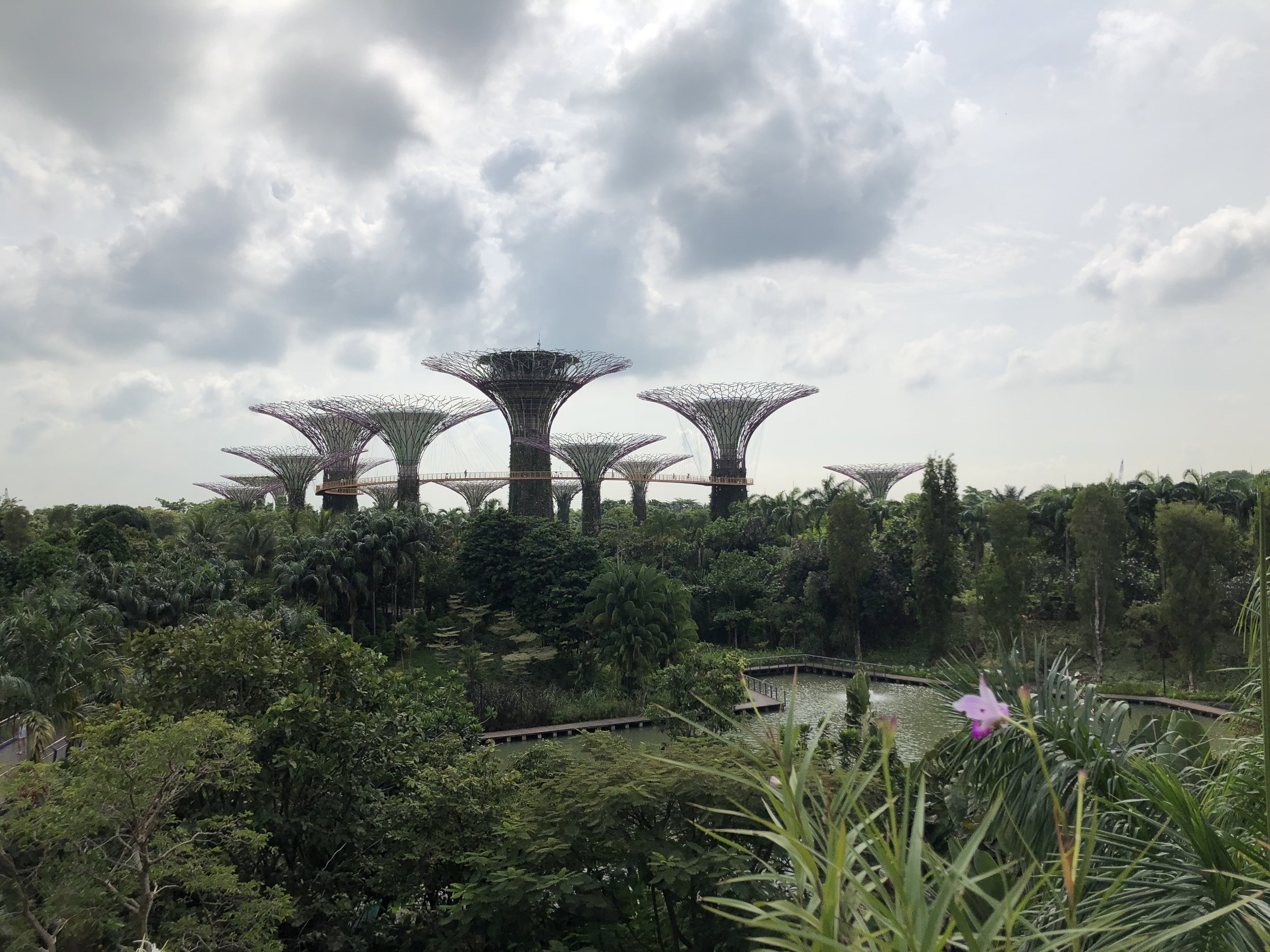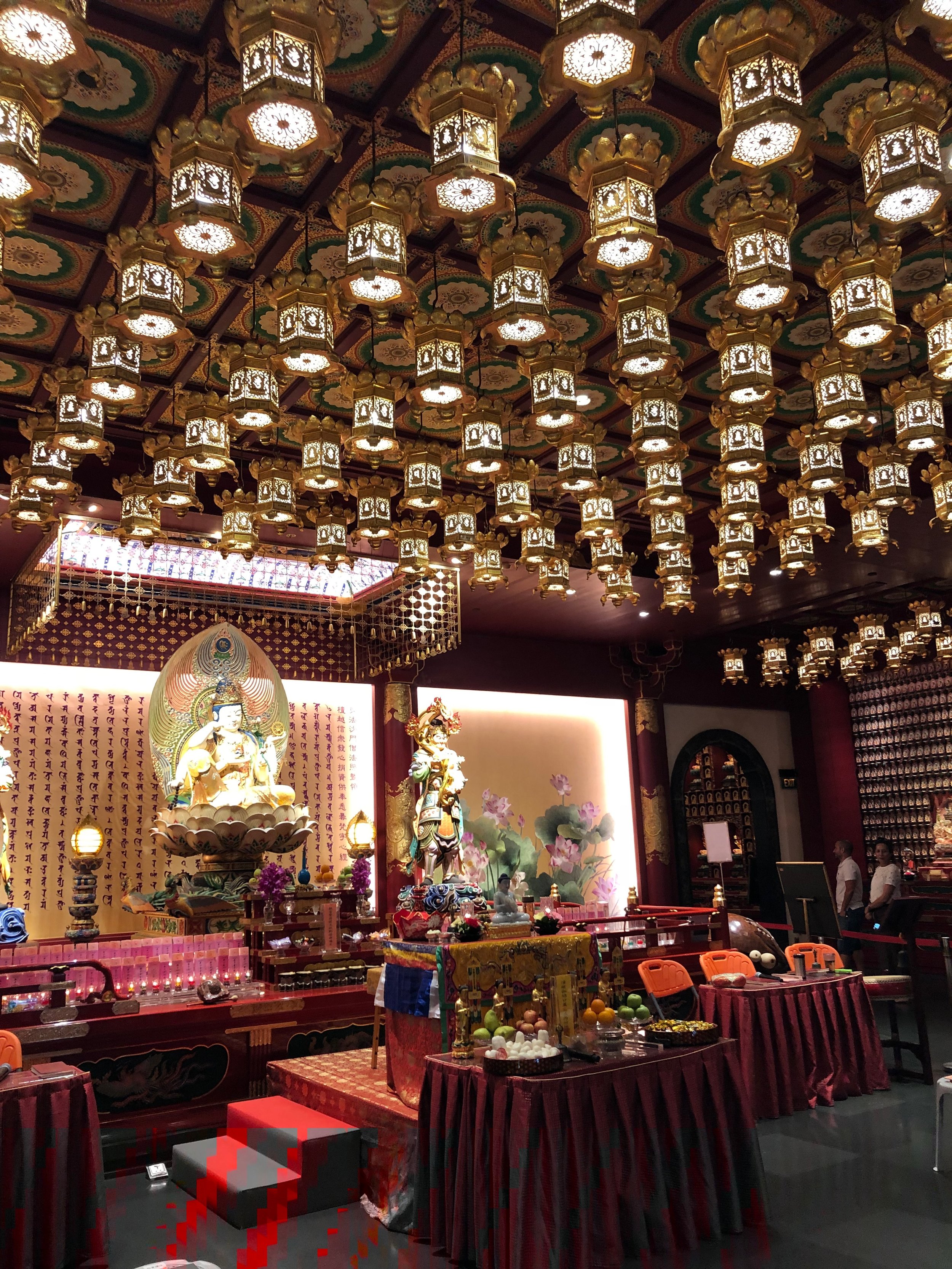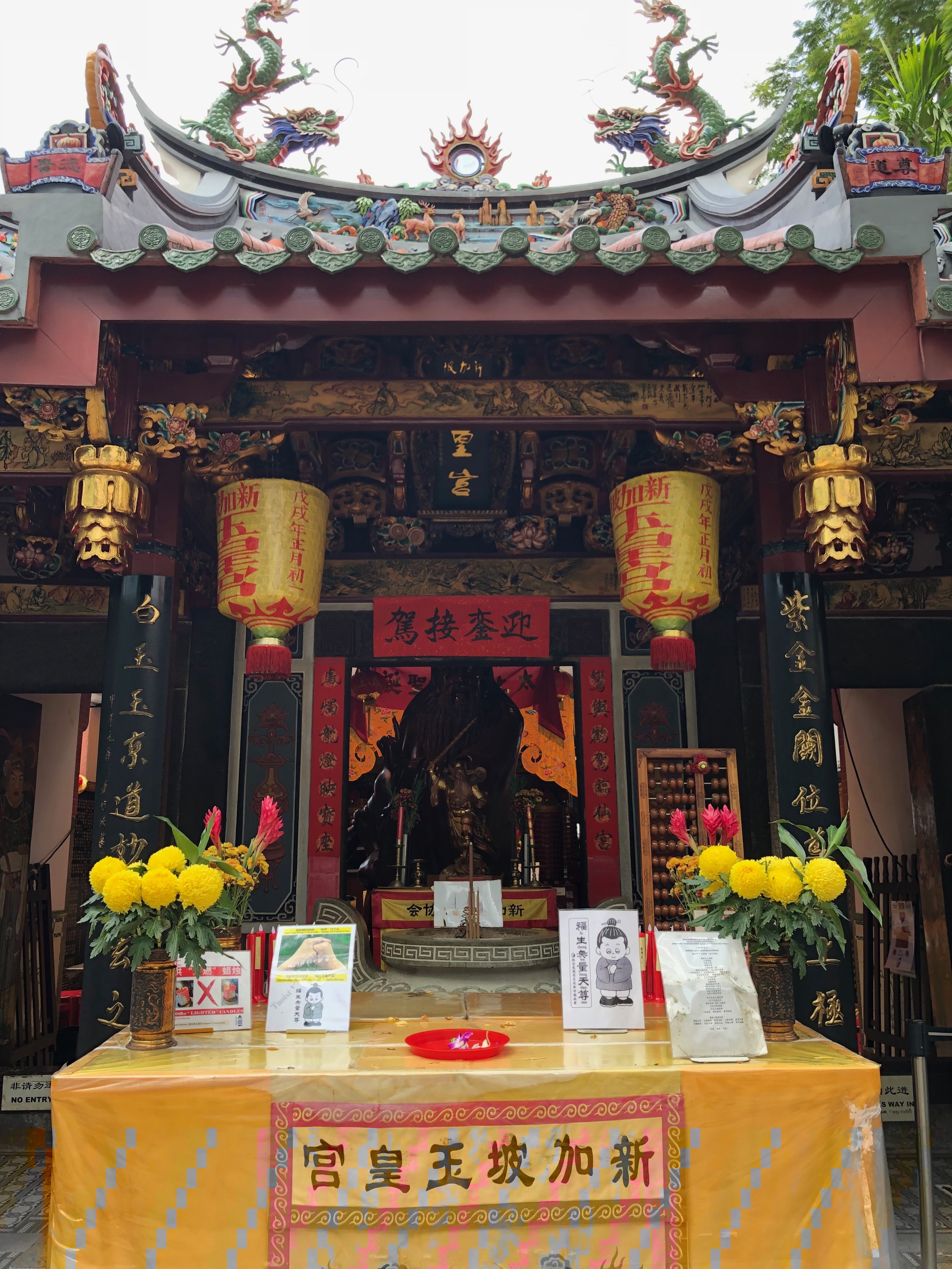We have been featured in New York Weekly, read further to find out what Hanson Ansary, president and CEO of The Maxxus Group, Ltd. has to say about Rewards That Stir Passion and Propel Performance Point the Way to Corporate Success, click here
Rewards that spark excitement: Five fabulous days in the Land of Incas
As event planners, we always strive to propose destinations that can stir passion among attendees—with their varying tastes and imagination. Rarely does a destination offer a wide range of offerings to appeal to everyone in the group. In the case of this particular corporate group that was before they had the good fortune to be invited to an incentive program in Peru—a destination that checks so many bucket lists. From awe-inspiring ancient history to deep-rooted culture, from majestic landscape to sumptuous cuisine at every turn, and from the most hospitable population to rich traditions, Peru offers transformative and unforgettable experiences that can’t be replicated anywhere else.
The primary point of entry to Peru for our group was the Jorge Chavez International Airport in Lima—which everyone found it to be both a friendly as well as an efficient gateway. The group was quickly whisked away to waiting vehicles—and on their way to discover a land like no other.
The first stop was the Westin Lima for the overnight stay. Located in the vibrant San Isidro financial and shopping district, The Westin Lima Hotel & Convention Center is minutes from splendid restaurants, galleries, and parks. The hotel’s elegant atmosphere, complete with a fire pit and a sleek bar known for its Negroni, added to the luxury that the group was expecting.
After enjoying a mix of Peruvian and international mix of delightful breakfast, the group was ready to discover the charming capital city, Lima. Lima is blessed with so many cultural and architectural gems that make it hard which way to turn. A cosmopolitan capital city, Lima displays its history through its rich culture and people.
On Day 2, we were already on the go to discover some of the unique destinations within this rich land. First stop: Arequipa known as “the White City.” A colonial city located among the most imposing volcanos, Arequipa has a balmy climate throughout the year, making it an ideal destination for an incentive program all to itself. The day was spent mostly exploring the spectacular landscape and sampling some culinary masterpieces.
Day 3 was reserved for Cusco, where the group was treated to an unforgettable experience. It is not an overstatement to say that everyone was left breathless by one of the wonders of the world—Machu Picchu. In this elegant and relaxed city, everyone seemed to have been submerged in history and the mystical Valle Sagrado.
On Day 4, we headed to Ica, a four-hour drive from Lima. Ica is an oasis in the middle of the desert shrouded in mystery. While in Ica, we headed to Paracas, where the group enjoyed the calming breeze from the ocean while exploring nearby islands inhabited by exotic species.
Before you knew it, the last day was upon us, and we had to trek back to Lima for the last night’s stay and departure on the following day. It is fair to say that Peru lived up to its reputation as a magical land where unforgettable events await those who are willing to go beyond the tried-and-true destinations elsewhere. To our delight, there was no one in the group that was not completely fascinated by this magical land. Needless to say, we got plenty of kudos along with heartfelt hugs as we parted at the Lima Airport.
For your next out-of-the-ordinary incentive destination, let creative geniuses at the Maxxus Group pull together a magical program for your superstar performers.
An Incentive Trip to the land of Anne of Green Gables
When an insurance company client asked for our recommendations regarding a unique destination for their top executives who have all “been there, done that,” we had to scratch our heads. While there are extraordinary incentive destinations throughout the world, we were asked to stay in North America—which made our job slightly easier. But on a continent with so many unique destinations, the task was not that easy until we had a brainwave—"how about Prince Edward Island” we asked our client? Lights went on our collective heads. “What a great idea!”
Off we went to prepare an action-packed itinerary. What follows is an introduction to the Canadian province as well as the highlights of what went into our proposal—that, incidentally, was received with excitement by our client.
Time to Learn
Prince Edward Island (PEI) seems to be on many travelers’ bucket list—and for good reason. A pristine island of rolling farmland, red cliffs, white lighthouses, golden sand dunes and shining lakes, PEI is one of eastern Canada's ‘maritime provinces,’ off New Brunswick and Nova Scotia in the Gulf of St. Lawrence. PEI may be Canada's smallest province, but it offers large doses of fun. Stunning beaches, hiking trails, and delectable seafood are just some of the treats that await a visitor to this fascinating island. PEI is famous for its red sand beaches and red soil—not to mention the eternal Anne of Green Gables.
The Charlottetown soil is the main soil of Prince Edward Island, accounting for roughly 470,000 acres of land. It has a sandy texture, is well drained and is very suitable for farming. The redness of the soil is due to its high iron-oxide (rust) content.
The first indigenous people to inhabit the island were Mi'kmaqs. They called the island Epekwik—meaning resting on the waves. The island was named Prince Edward in 1799 in honor of Queen Victoria's father–Prince Edward, Duke of Kent. The capital, Charlottetown, takes its name from Queen Charlotte, the wife of King George III.
At just 139 miles long and 40 miles wide, PEI occupies an area of approximately 2,185 square miles. From end to end, it takes about three hours to drive across the Island. The Island is connected to the mainland by the 8-mile-long Confederation Bridge, which begins in Bordon-Carleton, PEI, and ends in Cape Jourimain, New Brunswick.
In PEI, the summers are pleasant; the winters are freezing, snowy, and windy; and the island is partly cloudy year-round. Over the course of the year, the temperatures typically vary from 14°F to 76°F and are rarely below -5°F or above 82°F. The best weather in Prince Edward Island usually happens between June and September. During this time, the island experiences warm sunny days, and cloudless skies. Winters, however, are a different matter: PEI receives an average total yearly snowfall of over 110 inches. During the winter, temperatures range between 26°F to 11°F degrees, but chilly winds can make it feel much colder.
Prince Edward Islanders are some of the friendliest and most socially connected people in North America. In PEI, average families can afford a comfortable life thanks to the relatively low costs of living, as compared to elsewhere in Canada. Housing and heating costs, as well as the general cost of living, are among the lowest in Canada.
Time to Discover
A discovery journey to PEI must inevitably start with finding Anne at Green Gables. For over 100 years, children around the world have grown with stories of red-haired Anne of Green Gables, the 11-year-old orphan girl who is sent to live with a middle-aged brother and sister by accident. Visiting Green Gables Heritage Place on PEI’s north shore is like walking into a chapter of the book, with its white clapboard house, green shutters and an old carriage parked outside.
From Green Gables, we set off to locate as many lighthouses as we could. Classic white and red lighthouses dot eastern Canada’s coastlines making for nostalgic scenery everywhere. PEI’s 63 lighthouses in all shapes and forms made for perfect “lighthouse spotting”—an activity on everyone’s to-do list.
As we started to travel around the island, we could see flashes of its unusual bright red soil. In addition to being great for farming, the red sandstone makes for stunning views, especially when contrasted with PEI’s green fields or blue waters. Along the north shore of the island, in Prince Edward Island National Park and Cape Tryon area, we could see red sandstone cliffs with unusual and wonderful formations glowing at sunset.
Our discovery takes us next to a charming small town. PEI is full of delightful small towns all over the island, each packed with character. We set off to explore artist studios and shops selling handmade jewelry, pottery, and fabrics in a town called Victoria-by-the-Sea, where we learned about the town’s seafaring history, and where we were able to take a stroll along the dreamy red sand beach.
Time to Devour
PEI enjoys rich farmlands. The Island’s organic farmers produce potatoes, carrots, beets, soybeans, forages, hemp, grains, small fruits, diversified mixed produce (market gardens), beef and a range of value-added products (including animal feed rations, cold-pressed canola oil, fries and hashbrowns, flour, baking mixes, ferments, and preserves).
However, Prince Edward Island’s claim to fame is its seafood, which is available all over the island—from high-end restaurants to simple waterfront stalls. In addition to silkiest lobster, visitors can look forward to the tastiest crab, scallops, clams, mussels, and the freshest fish such as trout, haddock, and salmon. But nothing tops PEI's oysters. They're world famous, and justifiably so.
As part of our food exploration, we got to feast on Malpeque oysters at the Malpeque Oyster Barn in Malpeque Bay. For clams we found ourselves at the Clam Diggers Beach House and Restaurant in Georgetown. No seafood feasting is complete without an authentic fish and chips that we got to try on the deck at Richard’s Fresh Seafood in Covehead. To help down all that food, we were treated to some of the best spirits from Myriad View Distillery and craft beer from the famed PEI Brewing Company.
When in PEI, you can only top a sumptuous meal with a cone of mouthwatering Cows ice cream—a must here. Cows has been voted the best in all of Canada since 1983 when it all began. Cows ice cream is extra creamy, made using a secret recipe with milk from PEI cows and served in handmade waffle cones. Of all the 30 different flavors, the group’s favorites were Wowie Cowie (vanilla ice cream with toffee, chocolate flakes and moo crunch) and PEI Apple Crisp (apple ice cream with apple crumble).
As the proverb goes, “all good things must come to an end.” After three action-packed days of discovery and what seemed to be endless feasts of food and refreshments, it was time to bid farewell to this magical land. Judging by the sentiments of the majority of the group, this was one of the most authentic places to visit with lasting fond memories to boot…and off we went.
To plan a once-in-a-lifetime incentive program for your top performers, let the Maxxus Group offer destinations with broad appeal for your attendees.
Benchmarking Performance for Incentive Eligibility
As an incentive program planning and production company, the Maxxus Group is often asked by our clients to also manage their performance benchmarking plans in the hope that the affected employees are assured of some degree of impartiality compared to when the process is handled internally (either by the departments directly involved or by the HR department). While there are many approaches to performance benchmarking and the literature is rich with different concepts, theories, and methodologies, an informal survey of our clients indicate that most companies prefer a simple and streamlined process to maintain the transparency of the process.
It goes without saying that incentive programs represent great and unique opportunities to motivate driven employees to strive for higher achievements (whether in performance or in measurable contributions to the corporation’s goals). As counsel to many of our clients in designing their incentive programs, we take a rather simple and transparent approach to measuring performance that can be subject to an incentive program. As such, we take a somewhat narrow approach to benchmarking performance—as opposed to HR-driven perspective.
While a wide range of parameters can be used to measure employee performance, a balanced and well-designed incentive program must at least meet criteria that are universally agreed up by key stakeholders. They include:
· Individual goals
· Corporate goals
· Health & Safety goals, if applicable
· Client satisfaction metrics
· Peer reviews (in team structures)
It is universally agreed that incentive programs are commonly designed to attract and retain talent and boost employee productivity and morale. However, they can also be used to enhance employee loyalty and engagement—which in turn can be viewed as a competitive weapon vis-à-vis company’s competitors.
In our benchmarking assignments, we have developed a matrix of factors to be taken into account when measuring employee performance for eligibility for the company’s incentive program (which may be in multiple forms including cash, incentive trips and other forms of reward). The pillars of our matrix are a set of internal and external criteria that are taken into account when we design an incentive program for a client. Some of these key criteria include:
Internal:
motivation factors
performance enhancing factors
personal goals vs. corporate goals
measurable goals by department and by individual
quantitative vs. qualitative goals
External:
industry norms
competitors’ plans
shareholder values (especially in public companies)
Summary:
Incentive programs represent a unique and huge opportunity for progressive companies to motivate and extract above-average performance from among its driven target personnel. Such programs have the potential to create an environment that attracts highly motivated employees to a company. To design an incentive program that is both effective and is perceived to be impartial is a key challenge for most companies. While some elect to carry out the Herculean task of designing a benchmarking system on their own, many companies shy away from this task so as to avoid any perception of bias. The latter companies opt to retain the services of an incentive design company to ensure that their program passes the test of objectivity. The Maxxus Group has been recruited by many of our clients to help in the design of a forward-thinking and proactive benchmarking process to identify those employees that would be entitled to the company’s incentive compensation plan including goal setting and performance against established goals.
Editorial: In Praise of Leadership
Last year was the most challenging one for the event industry in decades. As unsettling it was, it taught us some valuable lessons. It tested our resilience at home and our inventiveness at work. While the trials and tribulations of the pandemic continue, it is now as good a time to pause and reflect on lessons learned. As we eagerly await to adapt to the new normal, the industry can look inward to spot rays of hope in leadership that would take us to a brighter future.
While many cried foul as businesses ground to halt, others rolled up their figurative sleeves and stepped up to lead during these turbulent times. In our industry, we quickly learned that we could not turn to the government for solutions to our biggest problems. Many governments across the globe--and here at home--resorted to obfuscation and finger-pointing rather than showing leadership in the search for solutions. Similarly, both academia and the non-profit sector were equally hampered by the enormity of the challenge—and therefore, unable to exhibit leadership in this particular industry.
During these dark days, the leadership seems to have mostly come from visionary companies in the this and a few other industries. These benevolent industry leaders became bridges for those in dire need to get the needed life support to make it past the pandemic. Covid-19 only magnified the leadership qualities of these farsighted companies.
At this critical juncture, it is once again leadership that will guide the industry out of the predicaments in which it finds itself. The industry is in grave need of preemptive leadership to sail out of these turbulent waters. Simply waiting till the pandemic has subsided is a recipe for regression. The event industry needs to reinvent itself to be in a better position by the end of the pandemic than it found itself in early 2020. Those that will survive must display leadership in both action and in philosophy to pull themselves and the larger industry out of the pandemic-induced crisis.
As we emerge from this global calamity, those industry leaders that displayed vision and resolute will have to be praised for their decisive actions that will likely lead to a new sense of normalcy. Others must learn the valuable lessons and take a more active part in helping pave the way for the industry to rebound in a healthy and robust manner. At this juncture, let’s take our proverbial hats off to those with the great sense of vision and leadership that became beacons of hope and future prosperity for all in this magnificent industry.
Hanson Ansary is President and CEO of the Maxxus Group and Global Management Services.
The Future of Incentive Trips in the post-COVID Era
The adverse impact of COVID-19 on the hospitality industry cannot be understated. Among the many subsets of the hospitality industry the MICE sector is perhaps most affected. No company wants to ever take any risks with the health and safety of its employees much less those with stellar performance. As the pandemic spread like wildfires, resulting in curtailed or suspended travel, just about every company suspended or canceled their planned incentive trips for their top-performing employees or customers. Some replaced the planned trips with cash and/or merchandise vouchers while others postponed planned programs in the hope that the virus would come under control in a reasonable amount of time and the programs could be reactivated.
Needless to say, as we now face nearly a year of lockdowns and shuttered services, incentive trips remain on hold for the foreseeable future. While the meeting industry has found a workaround—with adequate measures such as social distancing, reduced attendance, canceling buffet food and beverage services at meetings, etc.—incentive trips remain out of reach for the time being. Organizers of incentive trips are left with the sad reality that social distancing could suck all the energy and joy out of incentive trips. Would it really be a motivational experience if the participants could not stand at the bar and co-mingle freely with their colleagues?
When it comes to incentive travel and the impact of the pandemic, companies have now come to the realization that many of the implications of COVID-19 cut to the heart of what incentive travel is. There is no universal agreement as to when we will be able to travel freely again. Over the next few months, as a number of promising vaccines are rolled out, this situation will become clearer. However, in the meantime, the industry is in an endless holding pattern.
Among complicating factors are the time-sensitive nature of performance awards as a motivating factor, the future viability of key industry partners—chief among them the airlines and hotels—the justified fear of potential participants and others. Corporate event planners feel caught between the proverbial rock and hard place: The executives who constantly ask for the planners’ views as to when incentive trips can be resumed and hard realities of a global pandemic.
It is safe to assume that in the coming months some travel will resume—starting at the local and regional levels followed by cross-border trips. Rolling out effective vaccines on a global level is no easy task, complicated by potential travelers’ anxieties regarding health and safety measures in far-flung destinations.
While group incentive trips may not be coming on the horizon in the near future, the corporations can still adhere to a key core of incentive rewards: Motivation. This can be accomplished with individualized incentives rather than a collective approach. While the synergistic value of incentive trips will be somewhat diminished, the corporation can still foster an environment of recognition and reward among its top performing personnel. Upscale, individual travel, like leisure, will recover faster and it has the inadvertent “advantage” of appealing to the millennials with their pronounced wish for individuality.
While during the pandemic virtual or hybrid events have blossomed, they are not perfect substitutes for sought-after incentive trips. Yet, they can act as stop-gap and interim substitutes for the real thing until incentive trips in their traditional sense can be resumed. In a very short time since travel has been suspended, virtual events have filled a void in bringing qualifiers together in some way and keeping the spirit of cohesion alive within the broader corporate setting. Used effectively, virtual events have the side benefit of acting as “teasers” in maintaining the commitment to performance for future travel rewards.
To sum up, COVID-19 has no chance of killing incentive travel because programs are integral to the core business models of so many organizations. Incentive trips have the unique attribute of generating motivation and performance far greater than the costs associated with planning and delivering one. The synergistic value of a group of ambitious and driven employees spending valuable time together is priceless in contributing to the corporation’s long-term goals. Study after study has proven that incentive trips enrich companies in ways far more enduring than if the participants were given cash or merchandise. Given the value-adds of incentive trips, it is highly unlikely that COVID-19 will adversely affect it as an important motivational tool in the long run.
To plan your future incentive trips or virtual ones, call on professionals at the Maxxus Group for out-of-the-box solutions.
COVID-19: We Are Here for You
As the global community grapples with the personal and business implications of the Coronavirus, we at the Maxxus Group of Companies want our loyal clients and suppliers to know that we understand the enormous challenges we are collectively facing during these trying times. We are here for you to talk, to answer questions or to search for solutions. We view our partnership with our clients and vendors as a long-term commitment to their personal and business wellbeing.
While our industry’s business paradigm is under strain, our focus remains on the safety of our clients and associates. We are confident that once the challenges we all face with COVID-19 are passed—and they will pass—we will be ready to once again support your business and meeting goals. In the meantime, you can count on us to remain steadfastly committed to your personal safety and business success. Here are some of the proactive measures we have put in place:
Fact-Based Practices: We have always been a group of companies that are driven by facts. During these unsettled times, we continue to only rely on credible information from respectable nonpartisan scientific organizations in making decisions—or pronouncements—that affect our clients, suppliers and our team members.
Open for Business: While we will never put our employees at any risk, we believe in continuity of service—albeit in different format. Acknowledging our governmental agencies’ guidelines regarding social distancing, we remain committed to carrying on with business using technology as our support. Our associates are all fully equipped with state-of-the-art equipment to fully carry out their duties remotely without adversely affecting our operations in any way.
Deferred Programs: we are encouraging all our clients whose programs are affected by Coronavirus to postpone their events instead of canceling them. We will continue to work diligently to provide flexible terms and proactive communication regarding dates and availability for postponed programs at any of our group of companies.
Virtual Events: Should you wish to consider an alternate format for your planned meeting, we welcome the opportunity to support any virtual events with our creative solutions including engaging digital formats for effective group experiences in a virtual setting.
Financial Health: We consider ourselves fortunate in having a sound financial health to weather these volatile times without adversely affecting our operations or impacting on our commitments to our clients.
We consider ourselves blessed in having the most compassionate clients, dependable suppliers and dedicated team members. We thank our clients for their loyalty and wish everyone in our community good health and safety in these difficult times. We will be here for you when this volatile storm is behind us.
A Destination for the ‘been there, done that’ Group
In an era of ever-more pressure on incentive agencies for “off-the-beaten-path” destinations, we couldn’t resist the opportunity to propose Nicaragua to a client that has done it all. From large metropolises to secluded hide-aways, this client has experienced a wide variety of destinations. This year, we proposed an unlikely destination that was an instant winner: Nicaragua. It turned out not a single member of this group had even been to the country which made is a hit with everyone.
Nicaragua, set between the Pacific Ocean and the Caribbean Sea, is a Central American country known for its dramatic terrain of lakes, volcanoes and beaches. Vast Lake Managua and the iconic stratovolcano Momotombo sit north of the capital Managua. To its south is Granada, noted for its Spanish colonial architecture and an archipelago of navigable islets rich in tropical bird life. Nicaragua is the second poorest nation in the Western hemisphere but one of the safest. With its warm and hospitable people, it was easy to put the participants’ minds at rest about the choice of destination.
Our flight from Miami landed in Managua, the country’s capital. Managua is located on the south shore of Lake Managua. We had a few hours to spare before heading to our first selected venue. So, we arranged for a quick tour of the capital. In that short time, the group was able to visit Managua’s Santiago of Managua cathedral, a shell since the 1972 massive earthquake, on the Plaza of the Revolution. Nearby, we stopped by the tomb of Sandinista leader Carlos Fonseca followed by the 1935 National Palace of Culture that houses the National Museum. Then onto hilltop Parque Histórico Nacional Loma de Tiscapa known for its crater lake and huge statue of revolutionary Augusto Sandino.
In the lakeside Acahualinca neighborhood, we saw the Huellas de Acahualinca, fossilized tracks of human and animals from 6,000 years ago, preserved in volcanic mud. Southeast of town, we visited Masaya Volcano National Park that offers views of the active volcano crater. Close by, the group visited Chocoyero-El Brujo Nature Reserve home to forest trails and wildlife, including howler monkeys. The reserve encompasses the waterfalls El Brujo, with waters that seem to disappear underground, and Chocoyero, drawing flocks of green Pacific parakeets.
With this brief introduction to the city out of the way, our coach headed to San Juan del Sur, a town on Nicaragua’s southwest coast. The town is known for a string of nearby Pacific beaches, such as Maderas Beach, with its strong-breaking waves, and the quieter Marsella Beach. A towering, contemporary Christ of the Mercy statue stands on a cliff above the bay. Near a creek on the outskirts sits an ancient petroglyph. South along the coast, olive ridley sea turtles breed at La Flor Nature Reserve. The olive ridley sea turtle, also known commonly as the Pacific ridley sea turtle, is a species of turtle in the family Cheloniidae. The species is the second smallest and most abundant of all sea turtles found in the world.
After a three-hour travel by coach from Managua, taking in fascinating landscape and rural life, we arrived at Hacienda Ecolodge Morgan's Rock in the outskirts of San Juan del Sur. The group occupied the hotel’s entire inventory of 18 bungalows with screens only and no glass windows. Part of a protected jungle reserve, this stylish eco hotel with a private beach and a working organic farm is a minute’s walk from Ocotal Beach, 5 miles from the city of San Juan del Sur and 19 miles from picturesque Lake Nicaragua.
Set in treetops and built from sustainable natural materials, the rustic-chic bungalows offer daybeds suspended from the ceiling, local artworks and solar-powered showers, plus terraces with jungle or beach views. As a “bonus” there was no Wi-Fi nor TVs allowing our group to totally “disconnect” for a few days. With the roaring sound of the ocean as the background music who needs any other entertainment.
For the next two days, the group was able to choose from surfing on the hotel’s private beach, hiking amazing trails, yoga, spa on the beach, horseback riding on the beach or just chilling out in the most idyllic setting ever.
On Day 3, we boarded the coach for the trip back to Managua—and for the group’s onward journey to Little Corn Island. Getting to Little Corn Island—50 miles off the coast of Nicaragua—requires a big commitment. To get to this tranquil destination, we first had to board a domestic flight to Big Corn Island and from there by a 30-minute private boat ride to Little Corn Island.
But once we arrived, the Caribbean water made crystal clear that, in this case, it wasn’t about the journey, it was about the destination.
The group hopped off our beached panga to the welcome of our hosts at Yemaya resort (named after the African goddess of the ocean), who greeted us with refreshing mandarin and star fruit juice and damp lemongrass and mint scented washcloths.
The breeze felt deliciously pure—nothing motorized is permitted on the island, not even golf carts. Once again, the group had the hotel resort to themselves—all 16 rooms of it.
It was already late in the day. The group was a little weary, but mostly hungry. Dinner in the open-aired dining room featured fish caught earlier that day in the waters that lapped at the resort's beachfront and salad and vegetables freshly picked from the garden on the property. Afterward, the group sat back and enjoyed the evening show: stars, dazzling and bright.
The following morning, ready to explore, we donned our flip flops for the walk around the island—roughly 1.5 square miles in size—which included Caribbean water, gnarled mangroves, hidden beaches and dirt paths, deserted coves and lush jungle.
Along the way, we encountered a farmer's market consisting of one stand, stopped by the panaderia, where the group enjoyed the local specialty, coconut bread sold out of a family's living room, and caught a round of the baseball game between rivals Little Corn and Big Corn Island. The game was the afternoon's big draw and the part-paved, part-dirt path to the field was, by Little's standards, teeming with a half dozen local fans on their way to meet friends already at the game, cheering in Creole, Spanish and English.
Planning a Perfect Corporate Incentive Trip
Recognizing employees’ achievements has long been an objective in most successful corporations. Of all the possible options for rewarding top-performing employees corporate-sponsored incentive trips are by far the most sought after. According to surveys on the subject, nearly 70% of employees prefer an incentive trip to all other options—including cash and merchandise rewards. Having said that, incentive trips do not—and should not—remain static. Employees’ expectations and desires change as do the trends in destination choices. A lot more research needs to go in the selection of a destination and the content of the program to keep the target employees motivated and inspired year after year.
Here are a few important tips in planning that perfect employee incentive program:
Goal Setting
Beyond rewarding top-performing employees, every incentive trip should have one or more goal(s). In the early planning stage, you need to sit down with the client company management and find out if there are specific goals that need to be accomplished with a particular incentive trip—for example, team building, interdepartmental collaboration, or just relaxation and reward.
Target Audience
While the underlying principles of planning a perfect incentive trip are the same, the details that go into organizing an incentive trip for a group of young and competitive sales managers are different from an incentive trip planned for top dealers. The management should be able to measure the ROI of any incentive trip. So, get to know who the prospective participants are going to be and plan the incentive trip in such a fashion to ensure the client’s desired objectives are accomplished.
Budgeting
Regardless of goals and the prospective participants, there cannot be a successful incentive trip without a budget—typically set by management. While there are frequent references in the literature (including in our own blogs) that an effective incentive trip should not cost the corporation any incremental expenses (based on the assumption that the net gains from the improved performance of the target participants more than offsets any upfront costs). This principle notwithstanding, as an event planning company, you must obtain a budget from the company that would guide you in selecting an appropriate destination and include elements that fit with that budget.
Timing
In any organization, there are many factors that affect the choice of ideal date(s) for an incentive trip. The perfect time for an incentive trip will have to strike a balance between the choice of a destination, good weather, a slow(er) period at the office, and minimal leave/vacation requests. It is also very important to allow sufficient time to organize that perfect incentive trip (depending on the destination(s) chosen). The rule of thumb is a minimum of six months for long-haul destinations.
Destination Trends
To come up with “winning” destinations, the event planning company must strive to strike a balance between several key factors: company’s guidelines, if any, timing (including duration with the least disruption in business activities), participants’ preferences, budgets, popularity of the destination and the availability of needed resources at the destination.
Program Content
What gives an edge to an event planning company in organizing a top-rated incentive program is its ability to include elements are can truly meet the test of “uniqueness.” The program content is often a key driving factor for prospective participants and their drive to reach the goals set by their employer. To evergreen the program content for the same client, an event planning company must display resourcefulness in researching and proposing bona fide unique and exciting activities that perfectly match the profile of the participants and their expectations.
Local Content
Local content adds to a program’s authentic appeal. In addition, most corporations have an implicit or explicit policy to make positive contributions to the local community/economy where an incentive program takes place. This could take many forms including the use of local suppliers, local entertainment or various CSR initiatives at destination. The goal is to get away from the notion that the incentive trip is a “cookie-cutter.” Participants must “feel” the local flavor as much as possible.
Post Event
A good event planning company should be genuinely interested in assessing the success of any incentive trip as an invaluable tool in improving its performance on every front. So, a formal post-program evaluation and feedback process is a key tool in accomplishing that goal. Any feedback process should not be limited to the company executive but also to the actual participants. Today, social media plays a key role in employees’ lives and the event planning company is well served to use this new tool in soliciting feedback in addition to the more formal feedback tools. Employees’ assessments are critical in ensuring that the client remains satisfied with the services of the event planning company.
Conclusion
Incentive programs remain an important and popular tool for most organizations in motivating and energizing their employees. An event planning company can play a pivotal role to act as a conduit through which a corporation can collect valuable information regarding its employees’ sentiments, promote the esprit de corpsamong employees, and use as a valuable motivating factor. The steps in this blog are intended to help an event planning company to play a value-added role in helping the client organization(s) reach its/their desired objectives with any incentive program.
Colombia: The only risk is…
Long gone are the days that Colombia only conjured up a frightening notion of Pablo Escobar-inspired drug cartels and street gangs. To break with that past, ProColombia had adopted the slogan “Colombia, the only risk is wanting to stay.” That slogan has never been truer than today. Colombia now enjoys a totally different reputation—one of exotic landscape with a vastly-diverse culture. No surprise, then, that the country has climbed up to one of the top must-see destinations and one that many corporations are now favorably considering as an incentive destination for their top-performing personnel.
Notwithstanding its relatively-small size, Colombia is one of the most ethically and linguistically diverse countries in the world, with its rich cultural heritage reflecting influences by indigenous peoples, European settlement, forced African migration, immigration from Europe and the Middle East. Urban centers are mostly located in the highlands of the Andes mountains and the Caribbean coast.
Colombia is among the world's 17 megadiverse countries, and the most densely biodiverse per square mile. Its territory encompasses Amazon rainforest, tropical grassland and coastlines along both the Caribbean and the Pacific ocean.
With that backdrop, when we were asked for our suggestions for our client’s next incentive program, we did not hesitate to suggest Colombia—which happily was quickly approved. With relatively short flight times from many US and Canadian gateways, the group easily made it to their first stop in the country’s capital, Bogota. At first sight, Bogota is another big metropolis, buzzing with maddening traffic. But much like many other colonial cities, to discover real Bogota, you have to walk everywhere. Luckily, it was Sunday and most main streets in Bogota are closed to vehicular traffic—making it perfect for discovering many gems that would have otherwise been missed.
Upon arrival, the group was housed at the relatively-new Grand Hyatt with its many amenities and well-appointed guestrooms. The group got to get acquainted with life in Bogota by spending their first night with their colleagues at the Huerta Bar Cocteleria Artesanal—abar is famous for its cocktails that feature sustainable and local ingredients.
One of the most recognized highlights of the cultural diversity of Bogota is in display in the historical center of the city at La Candelaria neighborhood, where the buildings and streets guided our curious group through the story of the capital of Colombia. With this colorful introduction to the city, it was time for a sumptuous lunch. So, we headed to Prudencia Restaurant, where the menu changes every Monday and is inspired by Colombian cuisine.
On day 3, the group got to see one of the main attractions of Bogota’s historic center—the Gold Museum, a massive, 3-story museum home to more than 20,000 pre-Columbian gold pieces and artifacts.
From there we headed to the Monserrate Mountain—a must-go attraction. It was also a good excuse to make the group do some exercise by climbing up the mountain to reach the highest point in Bogota and a place with magnificent views of the city [although some still did opt for the cable car to make it to this amazing spot].
Having completed the first leg of their journey through Colombia, we boarded a short flight to Colombia’s famed city, Cartagena de indias. From afar, Cartagena’s skyline is deceptive. Its white towers rise above the Caribbean from a peninsula of tan sand and concrete, making it look like a bigger, beachier metropolis than it is. But with fewer than a million people, Cartagena is a compact city. One might expect the crisp new skyscrapers in Bocagrande to be amid a vital, cosmopolitan downtown. Instead, Cartagena’s character—its lush plazas, fruit vendors and street art—is contained in two small, impossibly photogenic neighborhoods: the walled Old City and the rising barrio Getsemaní. There, in the birthplace of Gabriel García Márquez’s magical realism, are the city’s most refined restaurants, its museums and balconies that spill over with flowering bougainvillea.
We arrived in Cartagena at midday. It was already time to explore the culinary treats of this historic city. There is only one way to truly experience Cartagena: by walking its narrow streets. From El Reloj, we took the walkway that passes in front of the city’s big convention center and into the Getsemaní neighborhood. On a narrow, block-long side street, La Cocina de Pepina is a pink-and-orange-walled dining establishment that is all Colombian. It is run by a local food historian, who thankfully for our group, speaks fluent English. The restaurant celebrates Colombian coastal cuisine with a chalkboard menu of dishes like ajies rellenos (roasted, stuffed chiles), sopa Caribe (a Caribbean seafood soup), an appetizer of cabeza de gato (balls of yucca, cassava and plantains with a roasted red pepper sauce) and the hard-to-find Colombian craft beer Apóstol.
By the time we were done with lunch, it was already very steamy. It was time for a sweet afternoon. We took the group directly to La Paletteria, where a glass case contains dozens of paletas in flavors like tamarind, coconut and Milo, a locally beloved chocolate-malt drink. A few doors down, we stopped at Swikar that sells colorful hard candy. The storefront attracts onlookers who watch caramelo makers swirl, spread and shape sugar syrup into strawberries, watermelon wedges and orange slices. Around the corner, Gelateria Paradiso looks like an English teahouse, with upholstered benches and white wicker furniture, but its gelato tastes of tropical ingredients like hibiscus flower, passion fruit and the local plum, ciruela criolla.
With dripping paleta in hand, the group climbed the fortified walls and walked the periphery of the Old City, where vendors hawk Cuban cigars and icy cans of cerveza Aguila, and young couples swoon in cannon portals, looking out across the choppy Caribbean. For those who cannot resist lingering over the sunset, there are touristy, but enticing, outdoor cafes that serve cocktails and wines. Then, we traced the stone wall back toward Puerta del Reloj, the clock tower gate that marks the entrance to the “centro histórico.” On the way, we stopped at NH Galería, a modern-art gallery and museum with a small, intriguing collection of works by Colombian and international artists.
The night had fallen. It was time for some CSR and a closing dinner that group will likely never forget: Dinner at a women’s prison!
Restaurante Interno opened in December 2016 and has already attracted a strong following in this tourist town. The group got to have dinner in a renovated hall which still has bars over the door but now is brightly decorated with pink paint, floral murals and comfortable cushions. Interno is located inside the San Diego prison in the heart of Cartagena. It is staffed by incarcerated women. The restaurant was created and is headed by Johana Bahamón who since 2012 has been working with her team of the Fundación Accion Interna to improve the quality of life in that prison and prepare the female inmates for reintegration into society.
Thanks to the INTERNO project, the inmates are now able to receive the training and skill sets they need to prepare for their freedom. These include gardening an herb garden, library, sewing machines, bakery, dining room, computer room, among others.
With a menu created by the best-known chefs, INTERNO has become a social experiment for the civilian population of Cartagena and visitors alike to play a key role in helping the servers (i.e., the inmates) slowly learn to taste freedom—a true second chance. We couldn’t have thought of a better CSR activity to finish our program than this visit (i.e., farewell dinner) to the San Diego prison. To the amazement of our guests, we had to share with them that INTERNO was selected by the Time magazine as one of the world’s 100 greatest places 2018.
For suggestions for your next “out-of-the-box” incentive destination, call on professionals at the Maxxus Group.
Lapland — The Case for an Incentive Trip to the Fantasy Land of Santa Claus
Lapland is made up of the Arctic region that caps the northern part of the Scandinavian Peninsula. Lapland in Finland is often referred to as the fantasy land of Santa Claus and Christmas. But it is a lot more. While you are bound to come across Santa’s reindeer and elves, Lapland offers a wintery European destination for an incentive trip like no other. So, when we were asked by a client for a winter destination for their adventure-craving sales force, we immediately thought of this magical winter land.
Much like the Yukon, Lapland owes part of its fame to gold. Gold was first discovered in the Lapland river valleys in 1868, resulting in a mini gold rush. There is still a little gold to be discovered in the Ivalojoki river valley for the determined prospectors. But the more valuable gold lies in experiencing Lapland in all its awe-inspiring beauty.
Arrival
The group arrived in Rovaniemi on a flight from Helsinki. Rovaniemi is the capital of Lapland and the gateway to the region. Despite its smaller size, Rovaniemi is a busy urban center packed with modern buildings, from the functional to the fascinating. While ninety percent of the old town was destroyed in World War II, a redesign, led by famous Finnish architect Alvar Aalto, has given birth to an architecturally-vibrant Arctic community.
The new town plan follows a reindeer antler pattern, and today's Rovaniemi features many meticulously designed, environmentally-friendly buildings that have inspired architects all over the world. One building that survived the war is a 1930s mail truck depot, which has been converted into the Korundi House of Culture—and that’s where we stopped by for an introduction to Lapland. This is where Rovaniemi's heart turns into art, with exhibitions of local artists. This is also home to a small but perfectly formed concert hall, playing host to the Lapland Chamber Orchestra.
Wildlife Everywhere
Having learned a little about this fascinating Northern metropolis, the group was eager to discover what they had imagined as the main attraction of Lapland—its diverse wildlife, whose number exceed Lapland’s population of only 180,000. There are wolves, wolverines and brown bears roaming around the wilderness of this Arctic haven. So needless to say, our group was thrilled at the prospect of encountering such a varied wildlife while on a day excursion.
And of course, there is reindeer—everywhere. Many locals keep herds of reindeer, which at over 200,000 exceeds the number of inhabitants. There are also huskies and white Samoyed that were brought in from Siberia as working dogs to pull sleds—which our active group found enjoyable as they explored the area on this unique mode of transportation.
Outdoors to Your Heart’s Content
Nothing gets the adrenaline in an active group going than sporting activities in such a unique land. There's nothing you can do in Davos or St. Moritz that you can't do in the ski resorts of Lapland. There's downhill, cross-country and freestyle skiing and snowboarding—which our adventure-seeking group took full advantage of. For the more relaxed members of the group, there was walking the forest trails with snowshoes or those who had their faces whipped by the fresh mountain air courtesy of a snowmobile.
For a teambuilding activity, we planned a fishing expedition for the group. In Lapland there are hundreds of gorgeous lakes (the biggest of which is Lake Inari in the far north, which covers close to 400 square miles), all filled with fish—a fisherman’s dream.
Even when the lakes are frozen, Lappish fishermen are on the ice with their ice fishing augers drilling through the ice by hand to catch pike, perch, rainbow trout and whitefish.
For our group, we had planned an ice fishing safari which included scooting off to a frozen lake by snowmobile. Though not many of our amateur fishermen came home with a catch, they got to enjoy a BBQ right on the ice—a once-in-a-lifetime experience for most.
Dining à la Lapland
It was finally time to experience the sumptuous Lappish food again. Needless to say, reindeer features heavily in the local cuisine. It's fat free, healthy and wonderfully gamey—although for some it was too close to the notion of Santa Claus. For those, there were plenty of other Lappish delicacies to explore. The highlight was reindeer food (lichen), which, when dried, makes a light, crisp garnish for all kinds of arctic fish, baby root vegetables, herbs, berries and even licorice.
The Light Show
Of course, Lapland promises the chance to witness the magical sky show otherwise known as aurora borealis (Northern Lights). Everyone’s bucket list included experiencing this galactic phenomenon.
Since most of Lapland is situated within the Arctic Circle, it's an ideal spot to watch the northern lights. According to ancient legend, an arctic fox, whose swishing tail sends sparkling lights into the sky, creates the aurora borealis. Dancing displays of green, red and blue lights can be seen on clear, dark nights when conditions are right—which luckily was the case for our group.
It’s All in the Heritage
No incentive trip to a far-away land is complete without some exposure to and understanding of the local culture. Lapland is rich with a thriving community of indigenous people.
The Sami originated in the Sapmi region of Lapland—a far-northern area comprising parts of Norway, Sweden, Finland and Russia—making them Europe's northernmost indigenous people. It is estimated that there are just under 10,000 Sami living in Finnish Lapland and our curious group got to learn about their culture, customs, costumes and languages by an organized visit we planned for them to the Arktikum Museum and Science Center in Rovaniemi.
Hot and Dry
Finland is almost synonymous with saunas. There are saunas at every corner and there is no hotel in Lapland that is not equipped with a traditional Finnish sauna.
Sauna has a very special place in the hearts of the local people, to the point of fierce rivalry. A real Finnish sauna is insanely hot, can last for hours and is most commonly enjoyed nude. There are electric saunas, hot stone saunas, smoke saunas and even an ice sauna. Locals meet in saunas, relax in saunas and some even give birth in saunas. They thrash each other with birch twigs in saunas.
This all was a fitting experience for the group to leave Lapland with. Our adventurous group even learned very quickly to follow the local tradition of jumping into a frozen lake after enjoying their very hot sauna.
With this heart-warming experience, the group was ready to head back to the US armed with what could easily be characterized as the lasting memories of an incentive trip of a lifetime.
To plan a once-in-a-lifetime incentive trip for your high achievers, let the professionals at the Maxxus Group prove their resourcefulness.
Inspiring Destinations for Your Next Incentive Program
As a leading incentive agency, with reputation for unique and inspiring incentive programs, we are increasingly challenged by our corporate clients to come up with out-of-the-ordinary incentive destinations that can motivate their target executives to strive to attain their performance goals. As enjoyable traditional ‘sun-and-sand’ destinations may be, some organizers are now more and more interested in incentive travel that offers their participants a truly exceptional experience with lasting beneficial impact. In what will be a series, we are pleased to present some truly unique incentive destinations that we have had the privilege to use for a few of our clients for their very ambitious and challenge-minded participants.
Photo by Filip Gielda on Unsplash
As one such destination, last summer we organized an incentive program for a small team of very active professionals in a little-known land. That destination was Greenland. If that doesn’t ring familiar, you are not alone. Few people in the world know much about the destination—and fewer have ever traveled there. Greenland is an autonomous constituent country but part of Denmark. World’s largest island, Greenland has a population of just under 60,000 inhabitants. It is situated between the Arctic and Atlantic Oceans, east of the Canadian Arctic Archipelago. Though geographically a part of the continent of North America, Greenland has always been politically and culturally associated with Europe. Most of its residents are Inuit, whose ancestors began migrating from the Canadian mainland in the 13thcentury, gradually settling across the large island. In 2009, Greenland was granted self-rule by Denmark.
Photo by Annie Spratt on Unsplash
Greenland arguably tops the list of most “exotic” destinations for extreme Arctic adventures, such as thrilling heli-skiing, kayaking among towering icebergs, and dogsledding across the top of the world near Qaanaaq (Thule). Roughly 80 percent of the island is covered by the Greenland ice sheet, and no roads connect remote towns and outposts. One can sail or soar into the wild via charter boat, ferry, helicopter, or plane. Adventurous visitors can climb the solid rock walls of south Greenland’s fjords or witness stunning northern lights displays in remote Northeast Greenland’s National Park, the world’s largest, covering an area more than twice the size of California.
Sermersooq Municipality, Greenland
Nothing compares to Greenland for an epic Arctic adventure. Greenland summers are truly glorious. In summertime, after the snow has melted, miniature wildflowers dot the tundra with color. Towards the end of summer, tiny lowbush blueberries and crowberries ripen as dwarf birch turns to gold and russet. Whales frequent the fjord, while icebergs, spawned from massive glaciers, glitter in the light of a late sunset. Beneath granite peaks that tower over deep inlets, Greenland’s east coast offers some of the best hiking and kayaking in the world.
After much anticipation and preparation, our excited group arrived in Greenland’s capital Nuuk, on a private jet. The following morning, after a good night’s rest followed by a hearty breakfast, the group appeared ready to learn a little about this unique land. Greenland’s largest city and capital is fueled on fresh air, strong coffee and diverse personalities. On a city tour, the group learned about Nuuk as a city of vitality, surrounded by immense nature and filled with vibrant Greenlanders leading fascinating lives of old traditions, modern twists, and diverse influences. After a quick visit to the Northern Lights-inspired Katuaq Cultural Center, and marveling at mummies in the Greenland National Museum, our knowledgeable local guide led us to the picturesque Old Harbor that clearly demonstrated the role history and traditions play in this growing city. We wrapped up our tour with a tasting flight of local craft beers at Greenland’s largest microbrewery.
After lunch, the group seemed prepared for their first “workout:” Climbing Ukkusissat Mountain in Nuuk. Greenland is a hiker’s paradise. In Nuuk, it is said that you are not a true ‘Nuummioq’ until you’ve climbed Ukkusissat (aka Store Malene), which is just outside the city center. Our fit group easily made it to the summit, where they were treated to a stunning view of Nuuk and the surrounding fjords.
Day Two was here and the group boarded awaiting helicopters for a scenic transfer from Kulusuk to East Greenland’s small administrative capital of Tasiilaq and from there toAmmassalik Island, where their more-demanding adventures were awaiting. Until just a few years ago, this region was accessible only by hiking or kayaking. East Greenland is possibly one of the most isolated places in the world. Beneath granite peaks that tower over deep inlets, Greenland’s east coast offers some of the best hiking and kayaking in the world. Here, for accommodation, we had planned a deluxe safari-style camp near the Greenland ice sheet—unquestionably a first for most of the group—where our lucky guests were about to experience this amazing Arctic landscape in complete comfort—with close-up views of the Greenland ice sheet. The camp’s location near the edge of mighty Sermilik Fjord provided the group with eye-level vantage point on huge icebergs floating by—and where they were lucky enough to spot a few whales and seals in the frigid waters.
Here, to get the group started on their discovery adventure, we set out to explore this magical land first by water. To create an action-packed teambuilding program for our energetic group, we first put them in what used to be the primary mode of transportation for the island’s Inuit population in centuries past—kayaks. Kayaks were once essential to the people of this region for hunting and fishing. Today, kayaks are making a comeback both as a symbol of national heritage as well as one of the active sports on the island. In fact, to celebrate the important historic role of kayaks, there is now even an Annual Greenland National Kayaking Championship.
On Day Three, our group got a little close and personal with the Greenland way of life. We took the group for an excursion to Kulusuk and Tasiilaq, the capital of East Greenland; and the tiny village of Tinit—a 20-minute boat ride from the group’s base camp—for a tour that outsiders rarely get to enjoy. The group seemed to thoroughly enjoy meeting the locals and learning about the enduring culture and traditions of East Greenlanders. The walking tour—including a visit to the town museum in Tasiilaq—provided the group with a firsthand lesson in the local population’s history and way of life. Most of our participants later noted that the tour provided them with an educated insight into the challenges and rewards of life in modern Greenland—a lesson that they would have not otherwise ever learned.
Before you knew it, Day Four was upon us and, to the disappointment of the entire group, it was time for the long trek back home. Luckily, we had good weather. So, onboard of helicopters again and over the snowcapped coastal mountains for the transfer back to Nuuk, and from there onward to North America equipped with the fondest and most enduring memories of a once-in-a-lifetime incentive trip.
Need inspiration for your next incentive program? Let the professionals at the Maxxus Group make a recommendation that is sure to wow your participants and measurably improve your ROI.
Racing Through the Dragon City
When we were asked by our client for a short incentive program to Beijing, we didn’t realize how short they had in mind. After finding out that the highend program had to be compacted into three days, we only then realized the magnitude of the challenge. Thankfully, there is so much to do in this magical capital city that our challenge was to try to be very selective. After arriving in China’s Capital midday from the US, the group was checked in the centrally-located 5-star Waldorf Astoria Beijing. Hilton family’s upscale brand was the perfect fit for our VIP guests.
Rich Chinese tradition and modern affluence flawlessly blend at the luxury Waldorf Astoria Beijing. We specifically chose Waldorf because it is located in the heart of the Wangfujing area, within walking distance of major milestones that we had to cover, including Tiananmen Square and the Forbidden City.
Oriental charm meets contemporary luxury at Waldorf Astoria Beijing. From the sleek and stylish lobby to the opulent bathrooms, our guests were treated to a unique blend of modern elegance, rich Chinese heritage and dependable Waldorf service.
Unfortunately for our travel weary guests, there was no time for recovery from the long trip. Comfortable shoes on and box lunches in hand, the group was led to the “Forbidden City” as their first introduction to Beijing.
Operating under the official title of "The Palace Museum," the Forbidden City (also known as the Imperial Palace) has been a place of wonder and mystery for over 500 years. This massive complex sits on the northern edge of Tiananmen Square at the epicenter of Beijing. Beyond its towering fortifications, our guests found an intricate labyrinth of squares, halls, gates, pavilions, sleeping quarters, and temples. In some of the structures, curated art and historic relics have been placed; however, the greatest achievement is the compound itself. We made sure the group did not miss the highlights that included the Meridian Gate, the Turret, the Antiquarium, and the Imperial Garden.
After the tour and a short tea break, we headed to Tiananmen Square, which is among world’s most famous public square (think Time Square). We were pleasantly surprised that most participants in the group recognized the Gate of Heavenly Peace—emblazoned with a portrait of Chairman Mao—as a symbol of Beijing. That recognition notwithstanding, it seemed our group was universally impressed by the vast size of the place. The square is the geographic, political, and tourist center of the Beijing, which makes it a must see. Although Tiananmen Square looks like a field of concrete, we wanted the group to see it for the surrounding attractions including the Great Hall of the People, Chairman Mao's Mausoleum, and the National Museum of China. We had to remind the group that taking a picture here is almost required to prove they had been to Beijing.
Given the massive size of the Forbidden City and Tiananmen Square, not to mention the long-haul flight from the US, the group was in bad need of rest. So after a quick dinner on the go, we rushed them back to the hotel for a well-deserved night’s sleep.
For some people, China conjures up only one image: The Great Wall. Our group was no exception. So, naturally we had to dedicate Day Two to an excursion to the most famous monument in the world. Located just north of Beijing lies portions of the Great Wall. Although it is impossible to see the whole thing (after all, it measures about 5,500 miles long), the intent was for the group to experience a portion of it. That begs the question: Which section?
For the novice to Beijing, only an hour's drive northwest of Beijing, the Badaling section is convenient, hosts a large souvenir market, and has a gondola to whisk visitors up and down the wall. However, the place is naturally overcrowded with tourists. This creates mob-like scenes that can spoil the experience for a VIP group.
The Mutianyu section, close to two hour's drive northeast of Beijing, was our favorite section for our discerning guests. Here, they discovered majestic mountainous vistas, a cable car for quick-and-easy access, a fun sled ride down, and (best of all) fewer tourists. With a good supply of water, sunscreen, and snacks, the group got to live this grand experience for themselves—although naturally some guests found the hike challenging and tiresome.
By the time we returned to the city, night had already fallen and the group welcomed their readied beverages prior to their authentic Chinese dinner at the famed restaurant Zijin Mansion.
You can’t come to Beijing and not experience a shopping marathon. We had saved Day Three for just that. The group got to choose which direction to go: Some elected ritzy shops while others were more interested in authentic Chinese artifacts. But both groups agreed on one destination: The Silk Market.
Silk Market Beijing, also known as Silk Street, Xiushui Street or Xiushui Market, is a prosperous shopping market in the city, located on Xiushui Street in the Chaoyang District. While it started as an outdoor market, the Silk Market is now a shopping mall, which accommodates over 1,000 retailers and is regarded as one of the symbols of Beijing. Many foreign visitors, including some celebrities, enjoy Silk Market Beijing for shopping or having their clothes tailor-made. Even the former president, George Bush, visited the Silk Market with his daughter to buy some silk robes. Although there are a variety of goods in Xiushui Street, the most attractive goods are silk. Even a silk museum has been built on the third floor.
After their shopping extravaganza, the group was treated to an authentic afternoon teatime before rushing to their rooms to fit their purchases in their bloated luggage for their trip home.
Next time you want to impress your high achievers, let the Maxxus Group suggest something more enlightening than the humdrum all-inclusive beach hotel.
A Piece of Paradise in Indonesia
No, not Bali!
Earlier this year, Bawah Reserve, a private island resort, opened in Indonesia’s Riau Islands. By description, the resort sounded as a perfect fit for a small VIP client of ours. So, we had to check it to find out for ourselves.
Bawah Reserve is an exclusive resort comprising six private islands in Indonesia’s Riau Islands, located 150 miles northeast of Singapore on the Anambas Archipelago. On arrival, we very quickly learned that Bawah Reserve is built on the philosophy of allowing guests to immerse themselves in the ecosystem, while enjoying “barefoot” luxury on-property.
Covered in lush jungle canopy, the private islands have three crystal-clear blue lagoons and 13 white sand beaches. Bawah Reserve’s waters and terrain allow guests to enjoy various marine-based activities and treks through the jungle. For those looking to relax, they can opt for the resort’s beachfront infinity pool or holistic wellness center. The resort takes seclusion to new heights.
Accommodating up to 70 guests, Bawah Reserve has 35 suites; these are broken down into 11 overwater bungalows overlooking the lagoons, 21 safari-like tented beachfront suites and three garden suites set among the island’s green flora. The suites are adorned with canvas and bamboo interiors.
With a strong commitment to environmental sustainability and ocean conservation, the recently launched Bawah Anambas Foundation has been established with the mission to preserve and protect marine life, indigenous flora and fauna and local communities living within the surrounding 200 islands. In the communities, the foundation will have a focus on literacy and access to education.
Prior to the land being purchased by two foreign investors six years ago, the Anambas Archipeligo had no tourism or hospitality offerings, making Bawah Reserve the first and only opportunity to access to this remote location. One of the key owners and investors, Matt Chapman, a Singapore-based entrepreneur and investor, also owns Parihoa Farm in New Zealand.
Access to the reserve was slightly cumbersome coming from Singapore. We first had to board a ferry from Singapore to Batam in Indonesia. From there, Bawah Reserve’s private seaplane took us on an 80-minute journey from Hang Nadim International Airport in Batam and landed directly in the waters of the resort. What made the experience very pleasant was the fact that the all-inclusive nightly rate included full round-trip transfers from Singapore, villa accommodation, daily meals, laundry, soft drinks, access to treatments and classes at the wellness center, surface water sports and snorkeling equipment.
We were sad to leave this small piece of paradise after our two-day site visit—but happy to be recommending the resort to our client. The buy-out of the resort will make for a one-in-a-lifetime experience for our client’s super achiever team. The Maxxus Group is grateful for the opportunity to learn about this gem, a stone throw away from hustle and bustle of Singapore and looks forward to showcasing this piece of paradise to our other clients.
A Cruise to China’s Sailing City
The second annual World Mice Day was recently held in the Chinese coastal city of Qingdao. The Maxxus Group was honored to have been invited to this important international fair as a hosted buyer. Qingdao does not come to mind as the first destination in China. But the city of over 9 million continues to attract tourists and international businesses from around the world with its abundance of natural beauty and its designation as the new “Blue Silicon Valley” (the oceanic valley).
If the choice of venue sounds uncharacteristic when compared to such other metropolises as Beijing or Shanghai, a little background may be in order: In 2008, Qingdao hosted the Sailing Regattas of the 29thOlympic Gamesas well as the 13thParalympic Gamesat the city’s Olympic Sailing Centre & International Marina. In 2009, China’s Sailing City welcomed sailors from the Volvo Ocean Race. In 2014, Qingdao hosted the International Horticultural Exposition. Qingdao also annually hosts the International Sailing Week,SINO CES, and International Beer Festival. Finally, the Clipper Round-The-World Yacht Raceis hosted bi-annually.

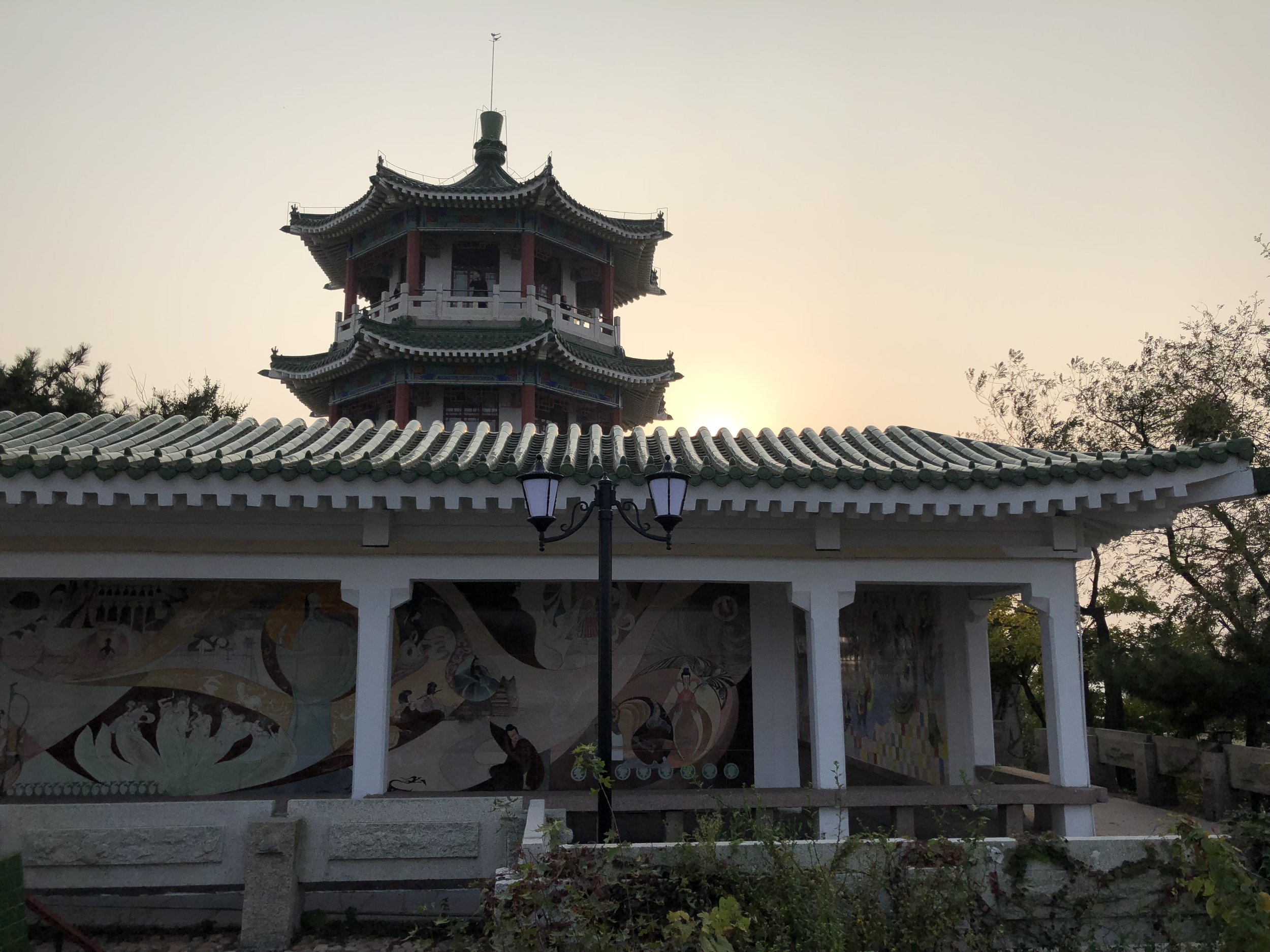
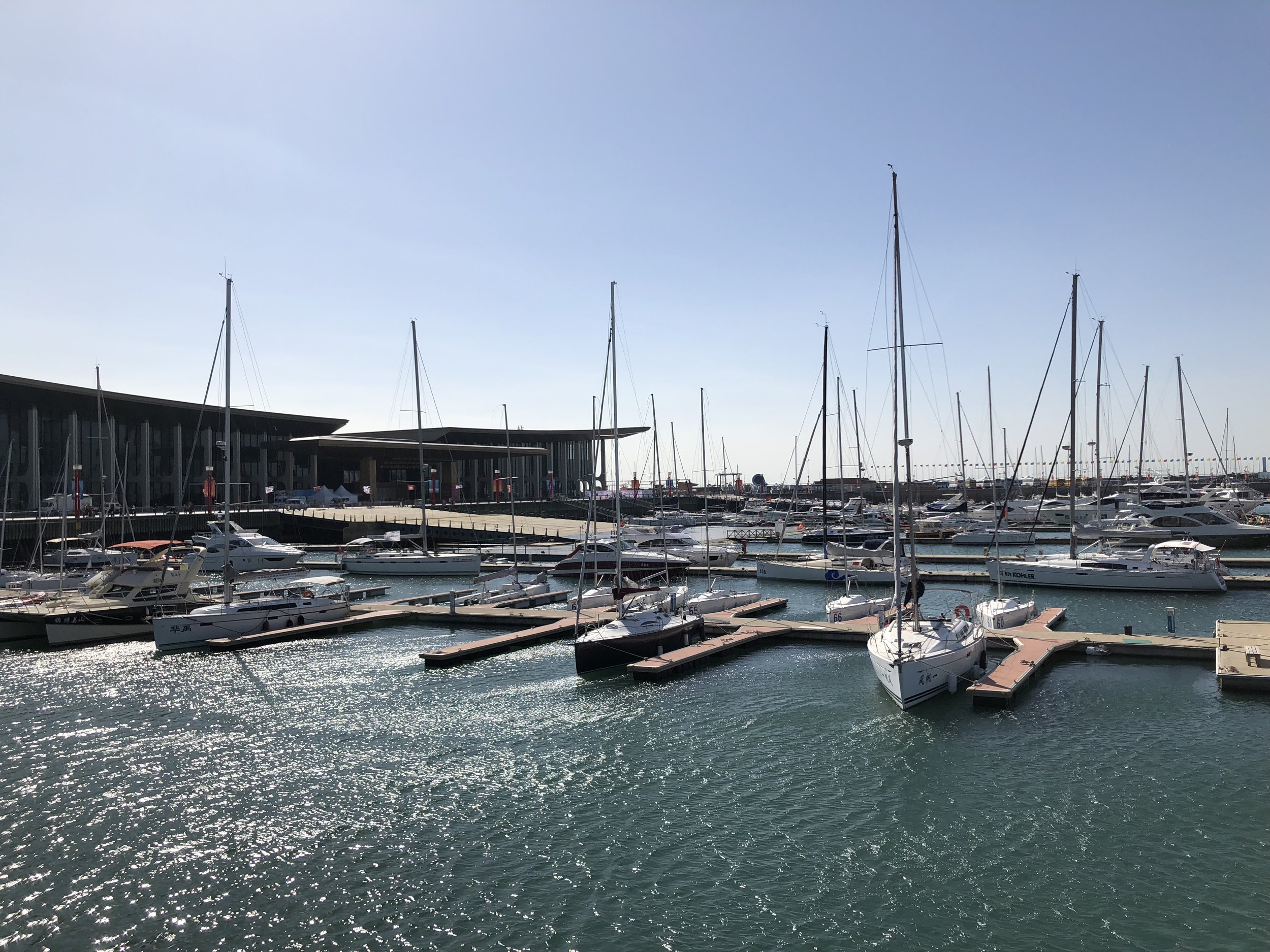
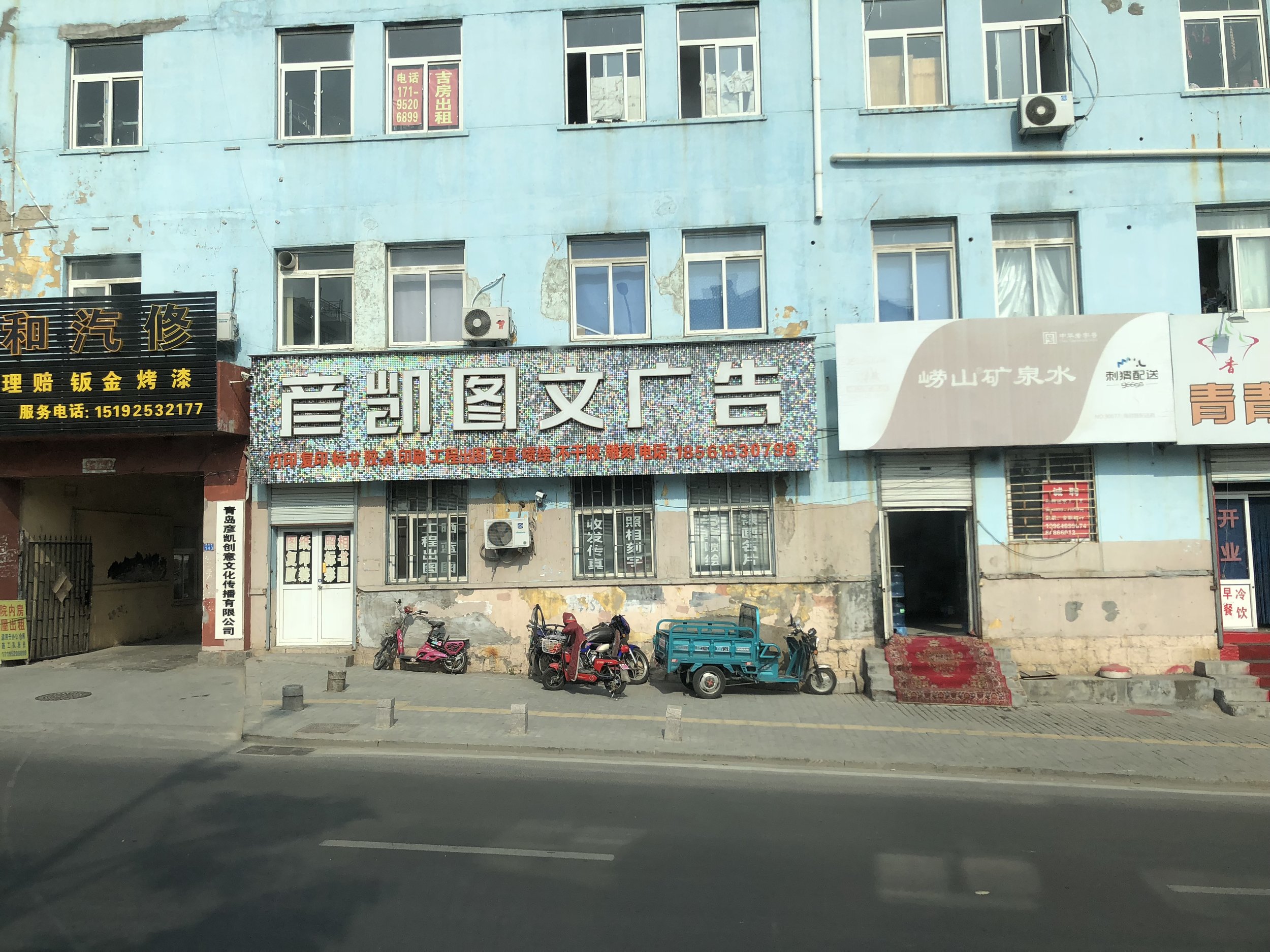
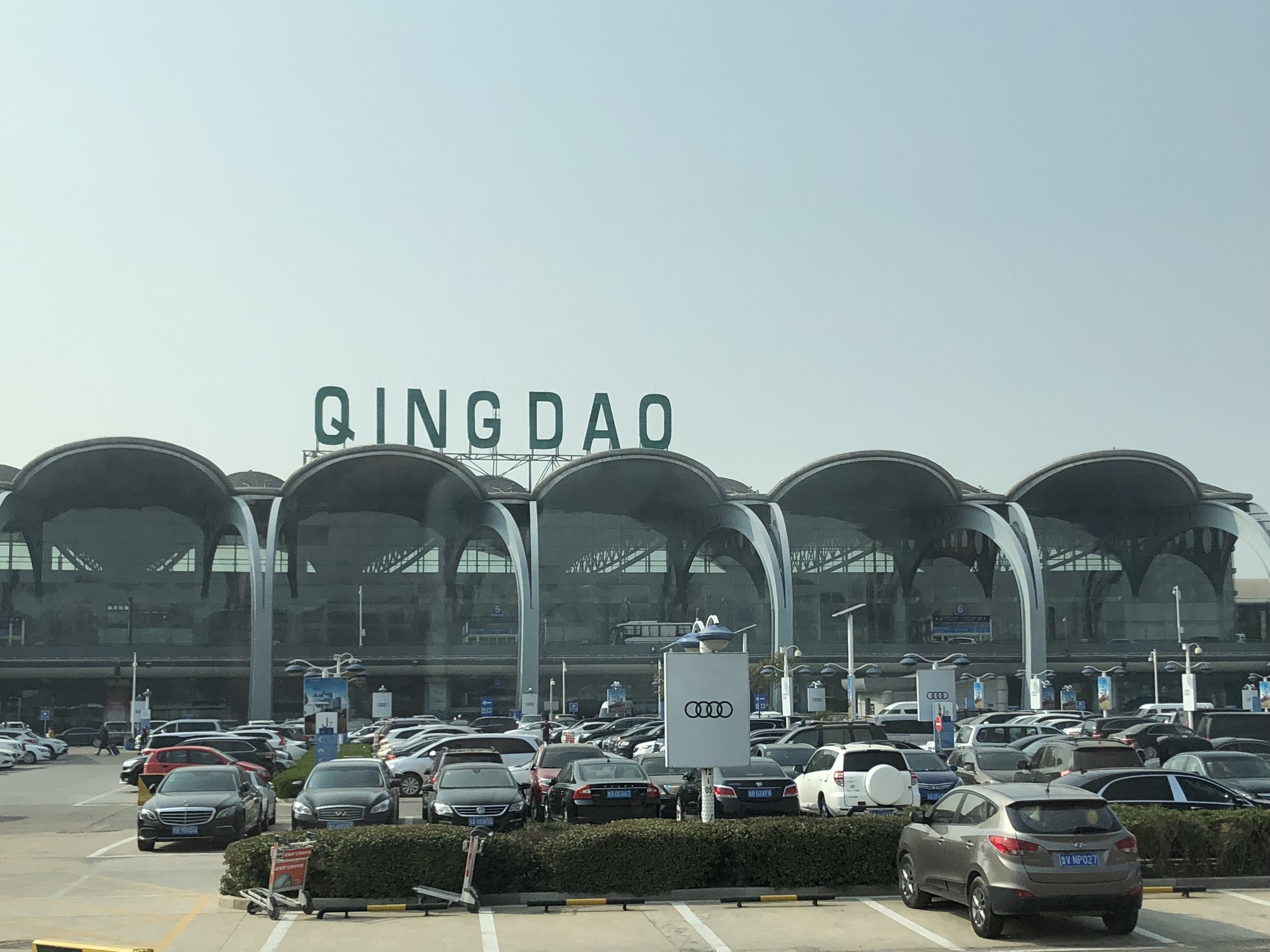
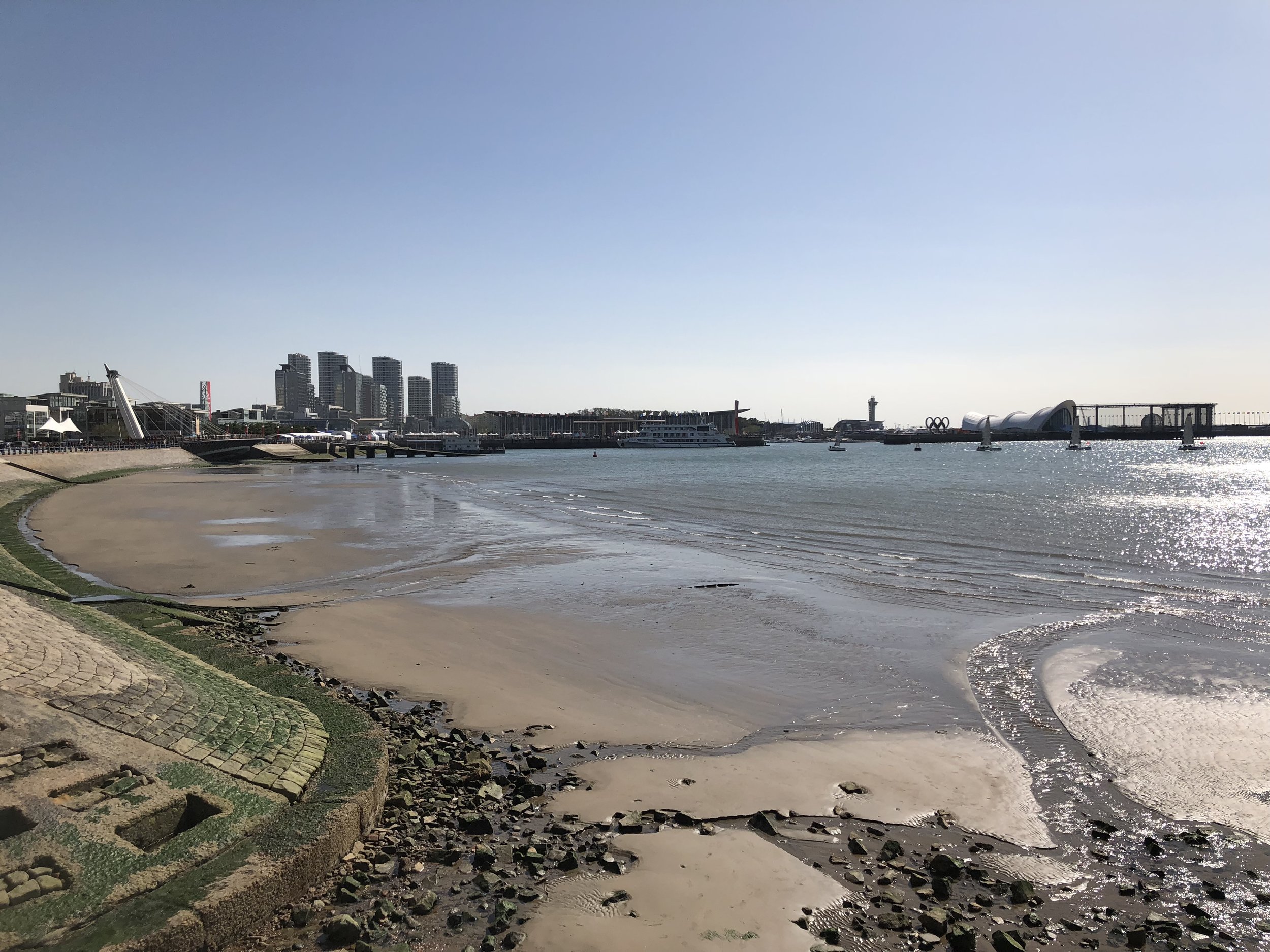
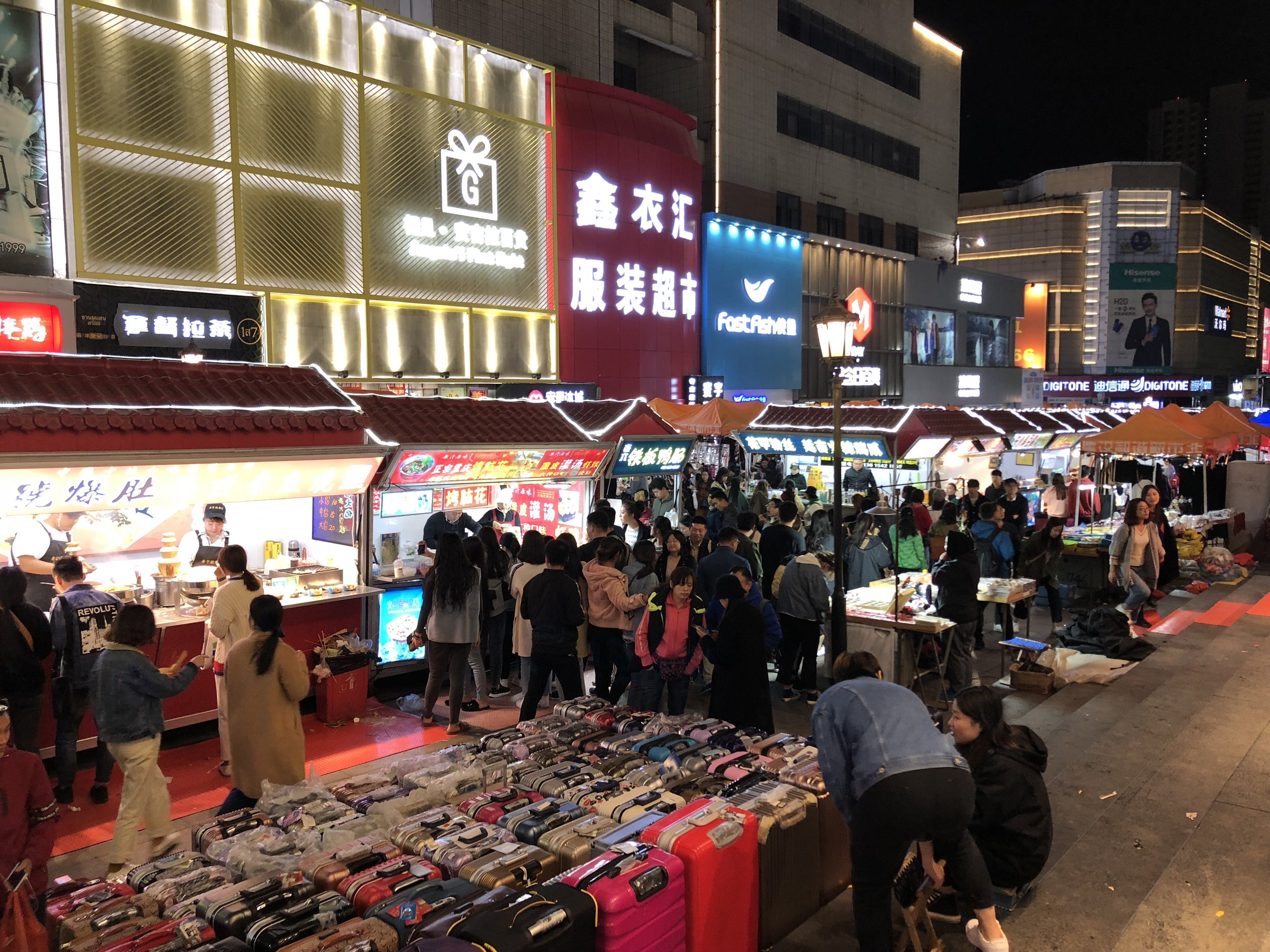
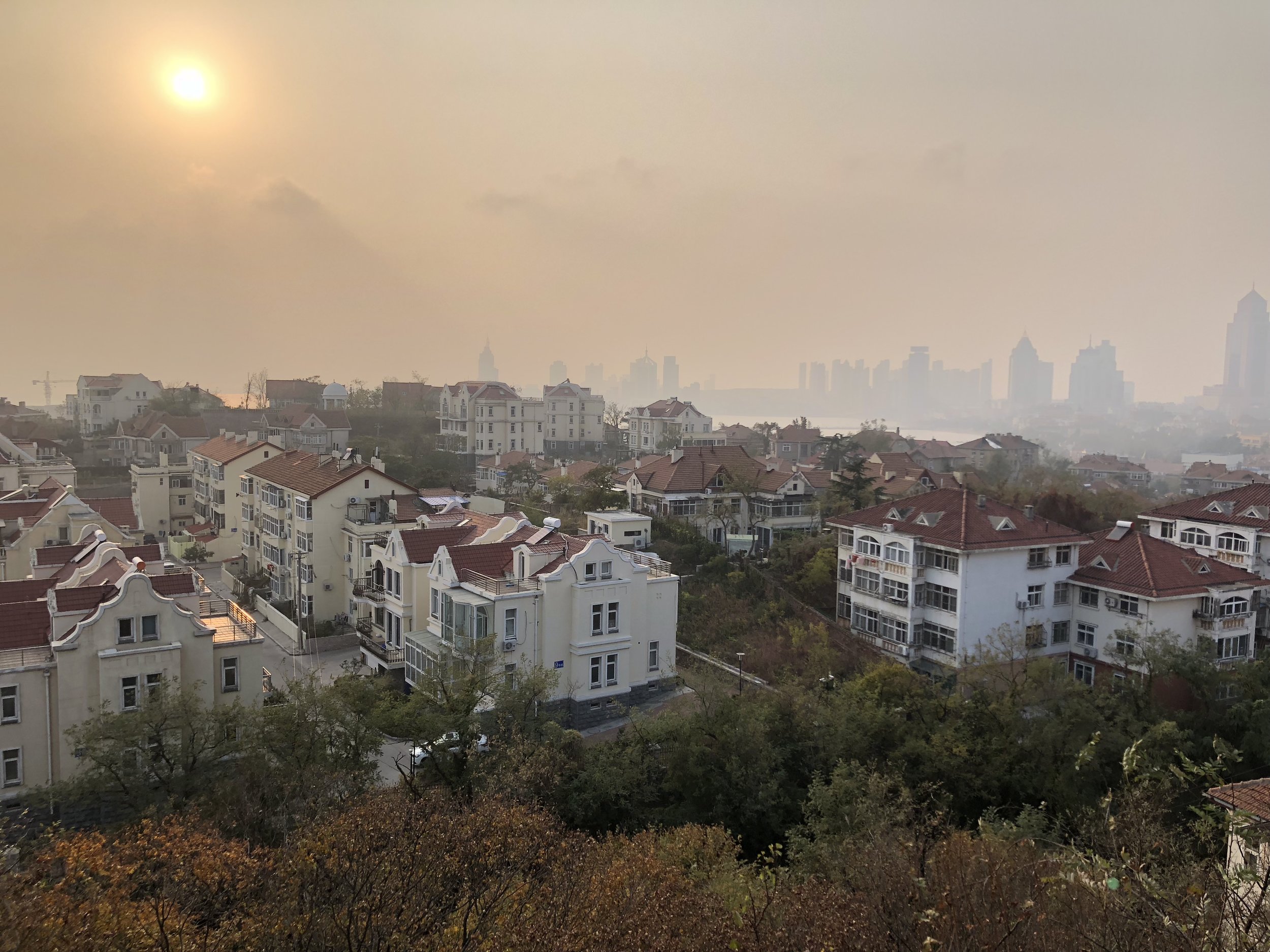
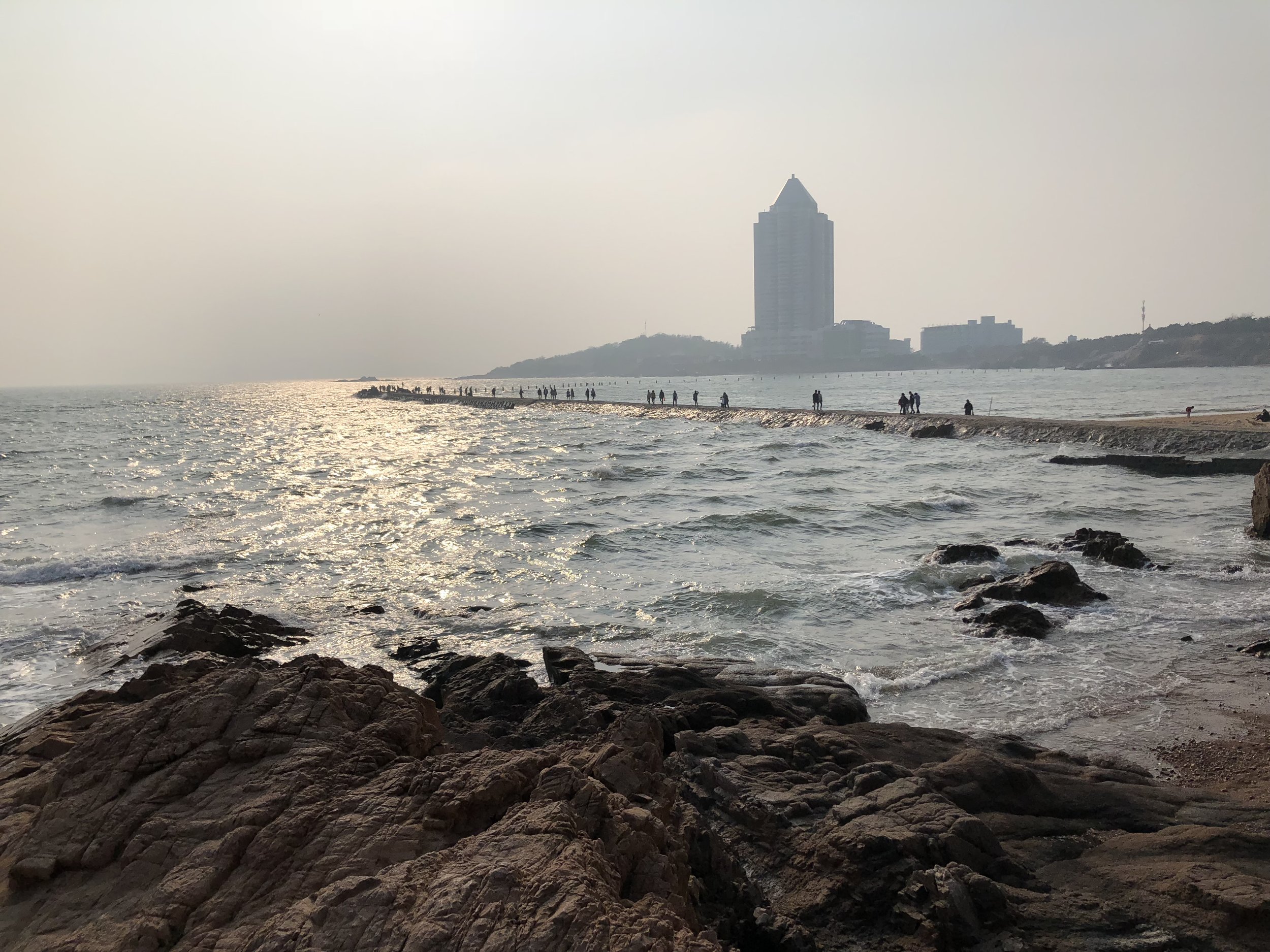


A Little History. A Little Geography
Throughout history, Qingdao has been known by several other names most notable one being Tsingtau. Tsingtau was a German concession from 1897 until the First World War broke out in 1914. During the siege of Tsingtao, the Japanese took control of the region while declaring war on Germany. The city reverted to Chinese rule in 1922, but was re-occupied by Japan again in 1938 during WWII. The city was finally completely liberated in 1949.
Also known as the Switzerland of the East, Qingdao lies on the southern tip of Shandong Peninsula in Jiaozhou Bay, on the shores of the Yellow Sea. Qingdao is one of China’s most important independent coastal regions. The city has experienced rapid growth over the last decade. Qingdao’s port is the second-largest in China.
Qingdao is well known for its European architecture, attractive coastal landscapes, and local folklore. Popular attractions include mystical Mount Lao, Badaguan, Tsingtao Brewery Museum, and Zhongshan Park. With its abundance of natural beauty, China’s Sailing City has become a bustling tourist destination for both domestic and international travelers.
Qingdao & Mice Industry
Although starting relatively late, Qingdao MICE industry is growing fast. With the completion of the first two phases of the Qingdao International Convention Center, Qingdao MICE industry is catching up fast with its counterpart cities in China. In recent years, Qingdao has become one of the most bustling MICE areas in China. Between 2006 to 2011, Qingdao was among “China Top Ten Exhibition Cities.” With so many tradeshows and exhibitions under its belt, Qingdao has now become a bustling center of commerce in China.
Qingdao has claimed many titled among them: The world's most beautiful bay, the world beer city, and the world's sailing capital.
Billed as “a professional communication platform for the MICE people [from] around the globe,” WMD-2018 lived up to its claim by gathering a distinguished group of world-renowned entrepreneurs, educational experts and other professionals from MICE industry to share their insight and success stories, and engaged attendees from across China and overseas through a unique mix of training and interactive sessions.
The three-day event was made up of six professional programs including keynote speeches by senior government officials, MICE Industry representatives and academia. There was also a tradeshow component at which various suppliers from the region got the opportunity to showcase their services and venue. All in all, WMD-2018 turned out to be a very unique forum at which to discover a unique part of China and come home with a great deal of knowledge about the MICE industry in Qingdao and its prospects globally.
We look forward to our participation at the third World Mice Day in Qingdao.
Three Roaring Days in the Lion City
Singapore, an island city-state off southern Malaysia, is a global financial center with a tropical climate and multicultural population. Its colonial core centers on the Padang, a cricket field since the 1830s and now flanked by grand buildings at every turn. So, we were very excited when we were asked to put together an exciting incentive program for our VIP automaker client.
Though a small country by any standards, Singapore is well endowed with enumerable attractions to satisfy any visitor—young and not-so-young. So, we had our work cut out for us: We had to compact all that there is to do in the “Lion City” in three days.
For a group that had never been to Singapore, the choice of hotel was relatively easy. Notwithstanding the line up of all the luxury brands, we felt the group would enjoy Marina Bay Sands the most—known for its wide range of amenities (a world-class casino, multiple nightclubs, performance halls, shops and spectacular overnight accommodations. Not to mention the Sands SkyPark, an elevated open-air concourse that crowns the resort). But the hotel is also famous for its iconic rooftop infinity pool that is one of the must-see attractions in Singapore—and one that can only be enjoyed by the hotel guests.
As the name indicates, the hotel is located in the district of Marina Bay, which is considered to be Singapore's tourism epicenter. Marina Bay houses some of the city's main points of interest as well as numerous opportunities for entertainment like The Float at Marina Bay (the world's largest floating stadium). We felt a walk around Marina Bay was a must for our first-time travelers. We recommended that the group try to take a stroll during the day and night, as both take on two different atmospheres. Those who were able to venture out at night were treated to the nightly light show put on by Marina Bay Sands. But after a grueling 15-hour journey from the west coast of the US, most of the group seemed a bit exhausted on arrival and anxious to rush to their waiting plush rooms, all with spectacular views of the city in every direction.
The next morning, after a sumptuous breakfast at the hotel’s 55thfloor executive dining room, with comfortable shoes on, we set out to discover this magical land. Our first stop: Orchard Road. Every modern metropolis has its commercial avenue. Singapore's version is Orchard Road. This electric boulevard buzzes with the whizzing of cars, the humming of neon lights and the swiping of credit cards, a far cry from the way things once were way back when. Orchard Road got its name from the presence of fruit orchards, nutmeg plantations and pepper farms that dotted the area in the early 19thcentury. Today, the mile-long street houses tons of eateries and a whopping 47 shopping malls carrying high-end brands, popular international retailers as well as local shops. The massive ION Orchard shopping complex is arguably the centerpiece of the street, so no surprise that many of our guests were inevitably lured inside by the designer names and stream of fashionable patrons.
Shopping bags in hand, the group was then transported to Little India with its bustling stalls. Straying a little from the mainland, the group got to immerse itself in this famed neighborhood. This cultural enclave, located a little more than 2 miles northwest of Marina Bay, features a dense network of streets and shops where the group was able to find anything from flower garlands to fragrant spices and colorful fabrics. While the group as a whole started by perusing the boutiques along Serangoon Road, many of them soon ventured down the smaller alleyways to discover true treasures. The adventurous bunch quickly discovered the 24-hour Mustafa Centre, perfect for grabbing any last-minute amenities, and the open-air Tekka Centre, which offers sari and goldsmith retailers. Our final meeting point was the gorgeous Sri Srinivasa Perumal Temple, a Hindu place of worship.
Time to head back to Marina Bay for a dine-around among the many eateries in the area and onto the hotel for a wide choice of entertainment to finish the night by.
Before you knew it, day two was upon us. After a restful night, we set out to discover the other end of the spectrum, Gardens by the Bay, a stone’s throw from our hotel. For those members of the group that were looking for a taste of nature without the trek, we had to take them to Gardens by the Bay, which is for all practical purposes an urban jungle. The attraction features a wide variety of enticing things to do and see that seamlessly mix Mother Nature with the metropolis. The Supertree Grove, the most recognized landmark of the park, features 18 "supertrees" that support the OCBC Skyway, a 419-foot-long aerial walkway that affords views of both the surrounding gardens as well as Marina Bay.
In the nearby seashell-shaped facilities, the group got to find the highly lauded Flower Dome and Cloud Forest. The Flower Dome is the largest greenhouse in the world and showcases numerous types of plants and flowers grouped by country—tulips next to replicas of Dutch architecture and Birds of Paradise flowers in the South African Garden. The Cloud Forest—the group’s favorite—features a 114-foot-tall mini mountain that is host to the world's tallest indoor waterfall.
Back to the urban life: As a nation of mostly immigrants, Singapore possesses a number of ethnic enclaves. Chinatown is one of the largest of them. Broken up into five districts, the neighborhood is packed with a variety of things to do and is constantly buzzing with pedestrians passing in and out of its shops, eateries and food stalls. No surprise, then, that our guests were all in awe just soaking in the sights and scenes. Those looking for souvenirs, headed right over to Pagoda Street for trinkets galore; and some ended up grabbing a bite on Smith Street or New Bridge Road, the latter of which is known for its barbecued meats. And when they seemed to need a break from the hustle and bustle, we took them to the Telok Ayer district. This area has the largest concentration of ancient mosques and temples in Chinatown. We had to step in the Thian Hock Keng Temple for some quiet Zen.
After their daylight excursion, the group seemed to be itching for a night out on the town. So, we directed them to the Tangong Pagar district, which offers loads of bars, pubs and karaoke lounges.
Day three was already here; so we headed to Merlion Park, which hosts one of Singapore's most recognizable monuments. The Merlion statue is the head of a lion with the body and tail of a fish, and the hybrid creature spouts water from its mouth and into the bay. Measuring 28 feet tall, the statue may seem a bit odd to the naked eye, but the statue is actually a nod to Singapore's history. The head of Merlion represents Singapura, the city's first name, which means “Lion City” in Malay. The fish tail and body symbolize Singapore's old days as a small fishing town. Even though the statue has claimed all the fame, another notable highlight is the park's panoramic view of the bay. The urban vista, with the spectacular Marina Bay Sands resort in the background, seemed to have greatly impressed our VIP guests.
After a box lunch, and to complete their trip, we planned a farewell to the city for the group from the top of the Singapore Flyer (think London Eye) Ever since Chicago built one in 1893 for the World Expo, cities around the world have learned that tourists really like Ferris wheels–huge ones. In 2000, London built its famous Eye, standing 443 feet tall. But Singapore didn't wait long before constructing the Flyer, which trumps its British equivalent by almost a hundred feet. Since opening in 2008, the 42-storey-tall Flyer, billed as Asia's largest giant observation wheel, has offered visitors 360-degree views of the urban landscape from Marina Bay. The attraction claims that visitors can catch a glimpse of neighboring Malaysia or Indonesia from the highest point of the observation wheel.
Our group labelled the Singapore Flyer as their favorite, with many of them saying the views atop the wheel were simply breathtaking. The 30-minute ride time seemed to have given our excited guests ample time to take in the great views and snap lots of pictures. What's more, the pods were air-conditioned, making it a great place for them to also cool off from Singapore's year-round heat.
Sadly, all good things must come to an end. The group’s flight home was upon us and after a quick refresh, and a rushed dinner-on-the-go, they boarded the waiting coaches and headed to Singapore’s Changi Airport, which is more like an upscale shopping mall. Our group was among the privileged few that got to fly on Singapore Airlines’ inaugural flight to Los Angeles on the first AirbusA350-900 Ultra Long Range (ULR) aircraft and with that an exciting trip to the Lion City came to an end. If Instagram posts are any indications, the group had a blast on this fast-paced trip.
If you must give a non-cash reward…
It's a fact: According to the Incentive Federation, 81% of businesses use non-cash rewards to
recognize their top-performing employees. In fact, US businesses spent over $90 billion last year on non-cash incentives. Clearly, businesses recognize the impact of non-cash incentives on their bottom line. With that recognition, the dilemma becomes what non-cash rewards to put on the table to motivate the best performance the company could hope for. While incentive travel remains the number one sought-after non-cash reward by high achievers, there are companies that consider merchandise incentives as viable alternatives.
With a dizzying array of options from which to choose, it's difficult to decide which merchandise reward will provide the most bang for the buck. Here are three important criteria in choosing the right reward.
1. Brand-Name.
Use brand-name merchandise. Incentive winners don't particularly crave a no-name product they might buy on their own or view with disparagement. Millennials in particular covet splurge items like brand-name electronics and watches. The reason? They're 27 percent less likely to spend their money on luxury products than their Generation Xer counterparts, according to a recent TD Bank study. So, presenting them with a high-end item they can't/won’t purchase on their own will score a huge win.
2. Go Classic.
Choose items that recipients are likely to hold onto for years to come, like a classic watch, suggests Adrienne Forrest, vice president of corporate sales for Bulova. "Watches are so special because they have an heirloom quality to them, so you can pass them on to a child or family member," she says. The longer a recipient keeps an item, the stronger the bond they'll have with the company that gave it to them.
3. Be Creative. Be Personal.
Contrary to popular belief, in the case of non-cash rewards, “tried and true” may not be the best way to go. The recipient must feel that some quality thinking went into the choice of the reward to make them feel special. Millennials covet different items than Baby Boomers. A little research may help buy significant goodwill with the recipient. Regardless of the company’s size, rewards can be made personal. The traditional “gold watch” to a retiree does not particularly motivate an up-and-coming young executive. Put some thought in the whole process.
Bewildered by all the criteria and the choices in deciding a non-cash reward for your top-performing employees? There is one “tried and true” reward you can fall back on and rest assured that it will be universally coveted by all—and that is incentive trips. Incentive trips are one category of non-cash rewards that candidates in a survey unanimously voted as the best.
Our bet is also on incentive trips. Let the Maxxus Group put forward viable non-cash rewards that would meet your corporate goals and motivates your key personnel to reach for the proverbial stars.
Three Days on One Happy Island
One of the exciting challenges for professional event planners specialized in incentive programs is to come up with the next destination that can excite the participants. With so many competing stimulating destinations around the world, it is always a test of our understanding of our clients and what motivates their participants to strive to achieve their goals to get to experience the next inspiring destination. For this auto maker client, having had incentive programs on every continent, it was time for “One Happy Island.” Aruba is one of those destinations that conjures up so many inspiring notions—a perfect stimulant for our next destination for this selective client.
With a fitting tag line “One Happy Island,” Aruba, a tiny Dutch Caribbean island off the coast of Venezuela, has dry, sunny weather, blond beaches and gentle surf. Constant trade winds bring cool breezes and cause the divi-divi trees to slope southwesterly. European influence shows in architecture that features Dutch gables painted in tropical pastels. It’s also evident in language, with English, Dutch and Spanish spoken alongside the local tongue, Papiamento.
Arrival
Bound from multiple points of origin from across North America, the participants converged at Aruba’s Queen Beatrix International Airport, where their VIP status was recognized with prearranged expedited customs formalities after which they were whisked away in the waiting vehicles arranged by our ground transportation partner—and onto the Ritz-Carlton Aruba for their awaiting luxury accommodations.
Overlooking the Caribbean Sea with miles of azure waters to explore, experience, surprise and delight at every turn, the Ritz-Carlton, Aruba, is one of the newest Aruba luxury hotels to rise along the island's spectacular Palm Beach. The hotel features 320 rooms and suites all offering private balconies and stunning ocean views; four dining outlets; a luxurious, 13-treatment room Spa; two swimming pools and a 24-hour casino. This exquisite getaway combines legendary Ritz-Carlton service with unprecedented opulence for an island retreat like no other.
Ritz Carlton
Aruba
Nothing says “ice breaker” than a “Bon Bini” Cocktail Reception at the Ritz’s Recreation Pool followed by a sumptuous dinner at BLT Steak terrace that provided the perfect backdrop for the group to connect in an ambiance of Classic American Steakhouse with a modern interpretation.
Day 2
After a restful night’s sleep, the group was in need of a good “stretch”—with a choice of yoga on the beach or for the more adventurous ones on standup paddleboards, after which they got to rest and enjoy the serene ocean scene from waiting private cabanas.
SUP
Yoga
As the morning drew to a close, equipped with hearty lunch boxes, the group got to choose from exploring the island on ATVs or, for a more tamed activity, head to the hotel’s luxury spa for some pampering.
In paradise, it seems fun never ends. Before you knew it, it was time for another sumptuous dinner. This one at the famed Wilhelmina Restaurant in its open-air setting that left everyone starry-eyed.
Day 3
Even on the Happy Island, time marches on fast—or is it faster? Day 3 was already here and so much yet to do. We couldn’t leave Aruba without experiencing “Cas di Wichi,” a local venue, a typical “Cunucu” house—actually the home of a local DMC owner—where the group was treated to an authentic breakfast of local cuisine; and where the group was able to connect and indulge in local experiences by participating in a watercolor painting session with a local artist, making their own local sauce or by learning how to prepare some local dishes.
You can’t be in these crystal-clear blue waters of the Caribbean without a hearty dose of snorkeling. Onboard we went and sailed to calmer waters to witness a magnificent display of nature’s extraordinary colors in the waters below.
Sadly, before you knew it, the farewell ceremonies were upon us. And what a display of color and fanfare with a traditional carnival sendoff—bringing three spectacular days of sun, sand and fond memories to an end. Infused with remarkable enthusiasm, the group was sent off to produce yet another record year performance to be celebrated in yet another spectacular corner of the globe.
Hong Kong in Two Days or Less
When our pharmaceutical client asked us to help them spice up their intense product training program that was taking place in Hong Kong for 5 consecutive days, we knew we had to come up with ideas to help the group recover from its “education fatigue.” To make matters more exciting, we were only given a few days to pull together a “rest and restoration” program. We rolled up our sleeves and pulled together a very light but fun-filled itinerary.
Morning 1:
We set off to Kowloon, the “Land of the Nine Dragons.” Kowloon is a melting pot of bright neon, shops and markets. The group got to discover the Bird Market, fortune-tellers and a huge range of bars and restaurants along the way. Some even wandered away to the nearby Space Museum, the Museum of History and the world-renowned Hong Kong Cultural Centre. Along the way, the group traveled through or by such well-known places as Tsim Sha Tsui East promenade, the Peninsula Hotel, Langhamplace, Temple Street, jade market, West Kowloon waterfront promenade, Hankow Road and Mody Road.
Afternoon 1:
After a hurried lunch, the group got to get “personal” with the city—one of the world's most cosmopolitan cities where East truly meets West. The group saw the Man (Literature) and Mo (Martial Arts temple), notable for its many fine, well-polished brass and pewter incense burners, after which we took the Peak Tram, climbing 373 meters and leaning at a 45° angle to see the most spectacular view of the city! On return, we stopped by the Stanley Market, a shoppers’ paradise where the group was able to do a spontaneous shopping for a wide variety of souvenirs as silk, garments, sportswear, Chinese artwork and accessories.
Night 1:
Before you knew it, it was nightfall. We headed to the world-famous Temple Street Night market, a great place for bargain hunting and rubbing shoulders with the locals. Our “Hon,” the open-top bus took us on a spectacular drive through neon-lit streets where the group was able to witness the towering skyscrapers glittering against night sky.
To end the night on a romantic note, we hopped on a chartered boat for a leisurely sunset cruise on Victoria Harbor with a gourmet international buffet on board for the participant to enjoy.
Morning 2:
After a leisurely breakfast on their own, the group was taken to Lantau Island, which is almost twice the size of Hong Kong Island and is one of the best-loved outlying islands. Along the way, the group got to see the experience the development of Ngong Ping Cable Car. The attendees then got a chance to explore Tai O, a quaint fishing village where the houses are all built on stilts, and visit the world’s tallest, outdoor, seated bronze Buddha statue sits at the Po Lin Monastery nearby.
Afternoon 2:
Time to head to the harbor again and see the world’s pinkest dolphins in action. We boarded the group onto a luxury cruiser from Tsim Sha Tsui in Kowloon to Tung Chung New Development Pier on Lantau Island. Along the way, while sipping their refreshments, the group got educated about the dolphins and their habitat.
Travel Home:
After this marathon of a program (the shortest we have ever run), we had to rush the group to their hotel to gather up their belongings and head to the airport for their individual journeys home to far-flung corners of the world.
In need of an “express” incentive program at the tail end of your annual meeting? Call the professionals at the Maxxus Group. We know how to get value out of every available minute for your participants.
How to Pick the Perfect Destination for Your Group?
The perennial challenge facing many corporate event planners is how to choose a perfect destination for a group’s event that meets a multitude of conditions—is appealing to the majority of participant, is easy to get to, fits the established guidelines with respect to budget, etc., and makes life easy for the planner in having to deal with a variety of logistics issues. What follows is a simple checklist of variables that an event planner can use to make a successful selection—though, such decisions are always bound to be more appealing to some than others. The goal, however, is to make sure the decision meets some important criteria.
1. Purpose
The most important criterion to consider when selecting a destination is the purpose of the event. Is this a meeting, a conference, an incentive trip, a convention, etc.? Naturally, depending on the purpose of the event, different destinations qualify. A convention requires large-scale infrastructure, whereas an incentive program calls for extensive amenities and destination appeal. Likewise, participants are more likely to tolerate a long-haul flight to get to a resort destination unlike convention attendees. Finally, costs are viewed differently when attending a convention vs. a corporate retreat (where the attendee may be expected to bear some of the cost compared to an incentive trip that most often is fully paid for by the company).
Not all destinations are created equal: The character of the destination must match the nature of the event. A branding event planned for New York may not fit very well in Omaha. Tahiti may be perfect for that VIP incentive program, but not for a tactical meeting.
2. Demographics
A good event planner must at all times have a clear idea about the makeup of the [majority of the] group. The destination should always be chosen considering the group. These questions should help determining how appealing a destination can be for a particular group:
Are the participants roughly in the same age group or a mix of age groups?
Are the participants active or laid back?
Is the group looking for an extraordinary experience?
Are partners also attending or is the group limited to employees?
What is important to the group?
Does the group prefer an urban or a resort destination?
If applicable, where did this same group travel to last?
The answers to these and other related questions should go a long way to help with the choice of a destination that is likely to have the most appeal to the majority of the attendees.
3. Budget
These days, there are hardly any corporations that give an event planner ‘carte blanche’ when it comes to planning an event—even high-end incentive programs have budgetary constraints. Once again, an astute planner will have to keep in mind some important financial criteria when choosing a destination:
Does your budget meet the destination’s cost index?
Is the destination appeal worth the cost index (in the eyes of decision makers, attendees, etc.)?
Is this trip paid for entirely by the corporation or are participants responsible for a portion of the cost (which affects their view of the destination’s affordability)?
How sensitive are participants to cost variables at a particular destination (i.e., ‘price elasticity’)?
How expensive is it to get a group to the particular destination (airfare, etc.)?
Are all participants coming from one location or multiple cities (which may add to the air fare and ground transportation costs)?
Does the destination infrastructure meet the corporation’s budgetary guidelines (with respect to hotel, transportation and other ground costs)?
How does the selected property’s costs compare to alternatives (room, F&B, A/V, meeting rooms, speaker fees, resort fees, etc.)?
Are there sufficient amenities at reasonable cost to meet the group’s expectations?
Finally, what is the ROI of your event at that particular destination [compared to alternative destinations]?
The ultimate goal is to strike a balance between the destination appeal and what it costs to have a program there.
4. Access & Egress
As appealing as some destinations may be, getting there might pose challenges for a group. Far-flung resorts always sound very appealing until you try to get a large group there from multiple points of origin. The destination’s arrival/departure infrastructure are critical to smooth execution of your program. Here are some important questions to ask in selecting a secondary or tertiary destination in terms of geographic location:
What are airport/seaport facilities like?
How many flights does it take to get to the destination (for the majority of your participants)?
What is the frequency of flights to/from the destination (should there be a cancelation or delay along the way, what happens to the group’s planned programs)?
How good is the destination’s ground transportation system?
How available are ground transportation means (coaches, sedans, etc.)?
Does your group need any ADA-equipped transportation?
How close is everything at this destination (hotel, entertainment, dining options, etc.)?
Are there any major constructions underway and/or bottlenecks at the destination’s airport/seaport, hotel, roads, etc. that may affect the group’s arrival/departure or movements?
Weather effect: Is the destination potentially adversely affected by weather patterns (for example, tornados or hurricanes)?
What contingency plans have you put in place in case of unforeseen weather-related emergencies?
There is a big difference between traveling to a destination privately and taking a group there. Group dynamics may make a perfectly-attractive sounding destination unappealing once some of these criteria are factored in. It is important to always keep in mind that even the most relaxed incentive program is not a vacation—neither for you nor for the participants.
5. Facilities
A carefully-selected destination should be more than just a nice hotel. Notwithstanding the fact that in any group there are some participants that rarely wander off the property, more adventurous attendees may wish to explore the destination beyond the property—even at an all-inclusive hotel or resort. Consequently, as a planner, you have to consider two separate set of issues: The property and how suited it is for your particular group’s needs and what else is available at the destination:
Does the hotel have enough capacity to meet your group’s needs (bell staff, concierge, housekeeping, etc.)?
What is the ratio of your total room occupancy to the total rooms at the hotel (you don’t want to be lost in a hotel with thousands of rooms with your VIP group of 20 members of the board of directors)?
What amenities are available at the property (golf course, tennis, pools, beach access, etc.)?
What about dining options onsite (restaurants, bars, etc.)?
How about meeting rooms? Does your group require specific meeting space? Is this an incentive group with no meeting requirements or does the group assemble for periodic get-together on property during the course of the event?
How family-friendly is the destination (in case participants are allowed/invited to bring along partners or family members)?
What is available offsite (for dine-arounds, tours, bars, night clubs, etc.)?
How easy is it for some participants to go off-property (availability of taxis, ground transportation, etc.)?
What makes the destination interesting or unique for your particular group?
Is there a language issue (do you need interpreters for your offsite activities)?
In the end, your goal should be taking into account all the variables and finding a destination that meets most—if not all—your critical criteria.
6. Safety
With heightened security risks around the world, selecting a ‘safe’ destination becomes an ever-more challenging task for event planners. While you do not want to come across as alarmist, you must remain vigilant when it comes to security risks at a particular destination—which can be a rapidly-changing picture. The risk factors are not always in terms of terrorism or national security dangers. Sometimes, they relate to personal safety of the group (for example, the risk of mugging, etc.). Here are some important questions:
What are the risk factors at the selected destination?
How safe is your group wandering off-property—especially at night?
If abroad, have you made a note of/contacted your country’s embassy/nearest consulate location in case of an emergency?
Does your company have an ‘Emergency Plan’ and are you comfortably familiar with it?
Specifically, do you have an evacuation plan in case of a natural disaster?
It is important to keep in mind that the group’s safety rests with you while on a program—especially if at a far-away destination. The planner’s role in such cases is elevated far above managing event logistics. You become the go-to person onsite for a multitude of questions/issues. Be prepared.
7. CSR
Some corporations have stated goals to contribute to the well-being of local communities in which they hold an event. This can range from insisting on green and healthy meetings to making a contribution to a local cause. The company policy may dictate selecting properties that are LEED certified. If the program calls for a social activity, the planner has to get acquainted with worthy causes in the local community that meet the corporate criteria for such CSR activities. Needless to say, to avoid any possible conflicts, a great deal of due diligence may be required to ensure that the cause is indeed worthy and meets all corporate guidelines.
8. The Planner’s Views
As event planners, we have a great deal of influence on the selection process of an event destination. In this process, some planners have more latitude than others. Some work directly with senior management (for example, the CEO) in choosing a destination for an important event while others have to satisfy a large group of stakeholders (for example, a committee, HR or marketing departments). As with many other aspects of our jobs as event planners, freedom in selecting a destination could be a double-edged sword [“live by sword, die by sword”]. And unfortunately, it is only at the conclusion of the event that the verdict is handed out. In the case of a perfectly-run event, the event planner stands to shine. However, should there be any incident along the way—event if it is totally out of the control of the planner (for example, in the case of a natural disaster)—he/she may be the target of some criticism for selecting the destination in question. The above guidelines are intended to help you minimize your exposure to criticism—direct or indirect. While an exotic destination always sounds very appealing, a word of caution: Make every effort to be prudent—and thorough—in your selection process.
Finally, planners work in an interconnected world: If in doubt, reach out to your colleagues in the industry for a second opinion on a particular destination; or, direct the above questions to your qualified event planning company.
Let the Maxxus Group help you select that perfect destination that satisfies all of the above criteria.


